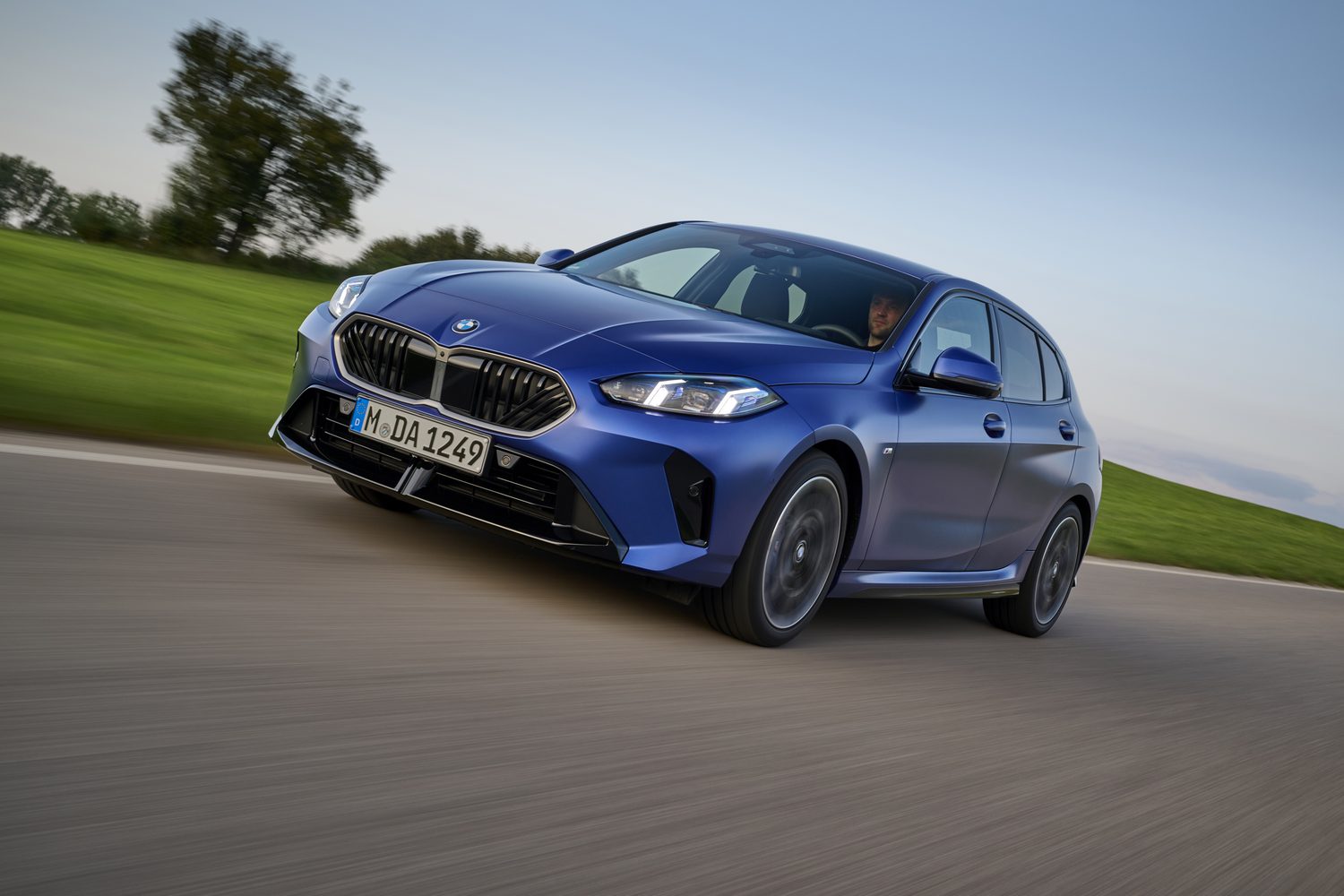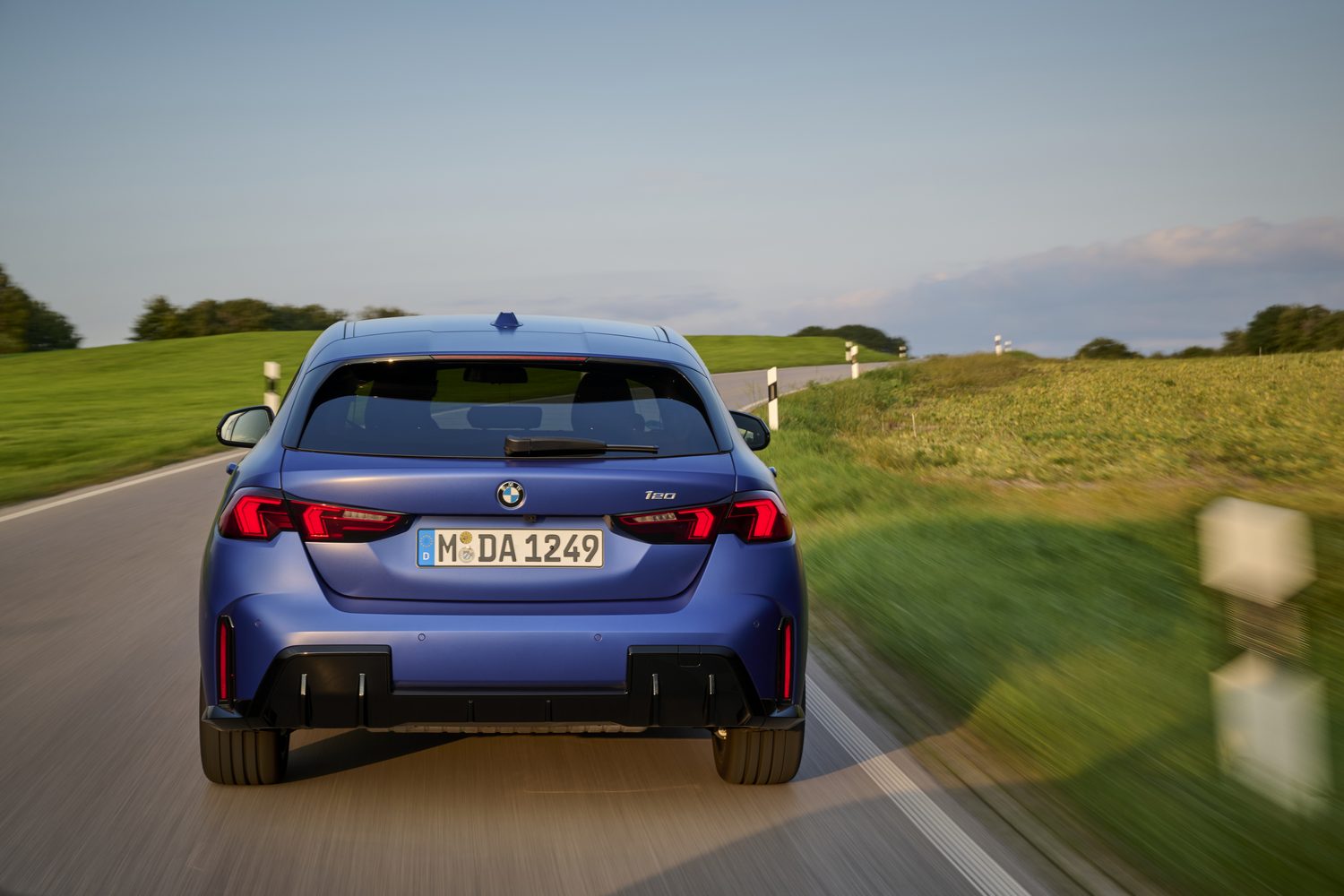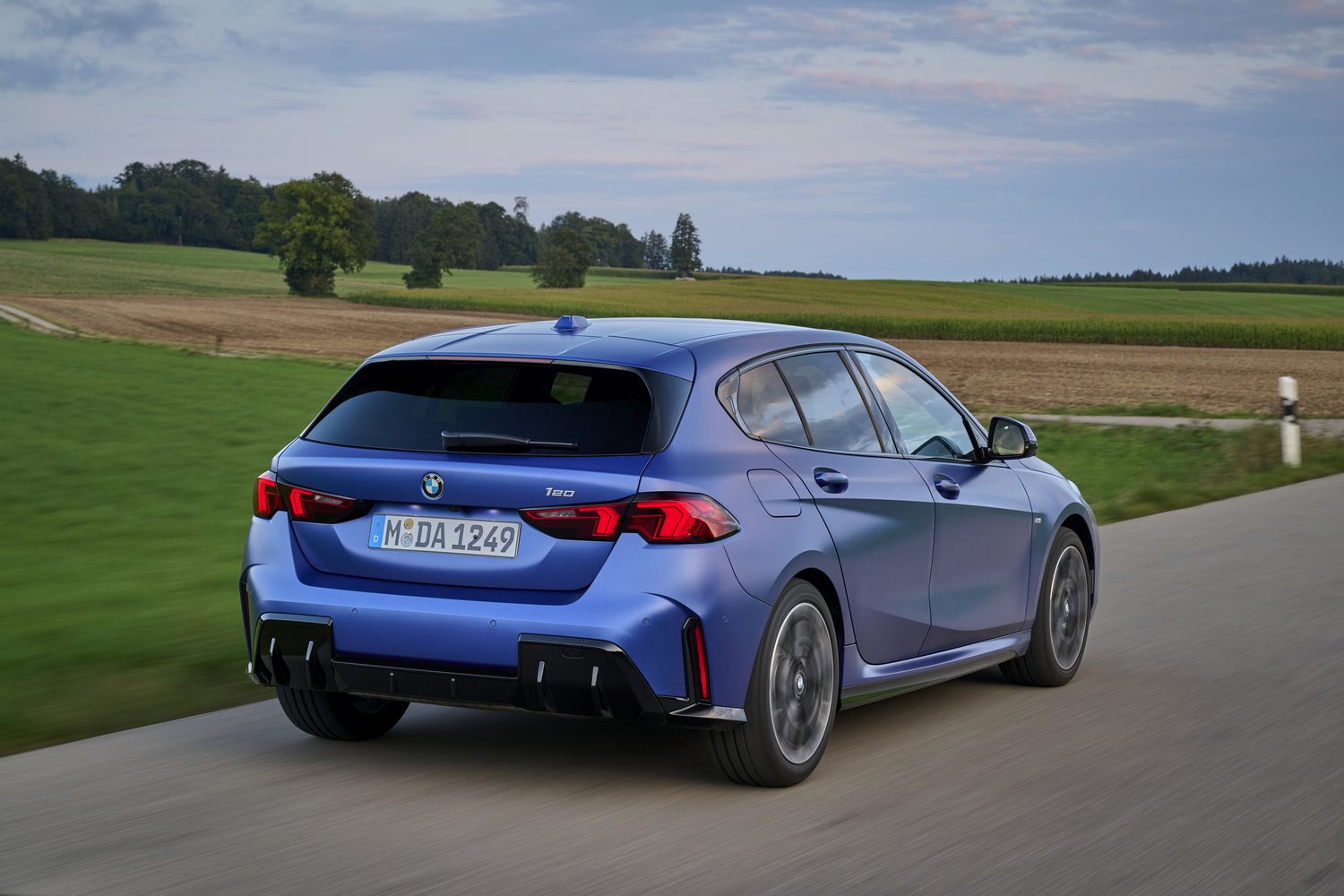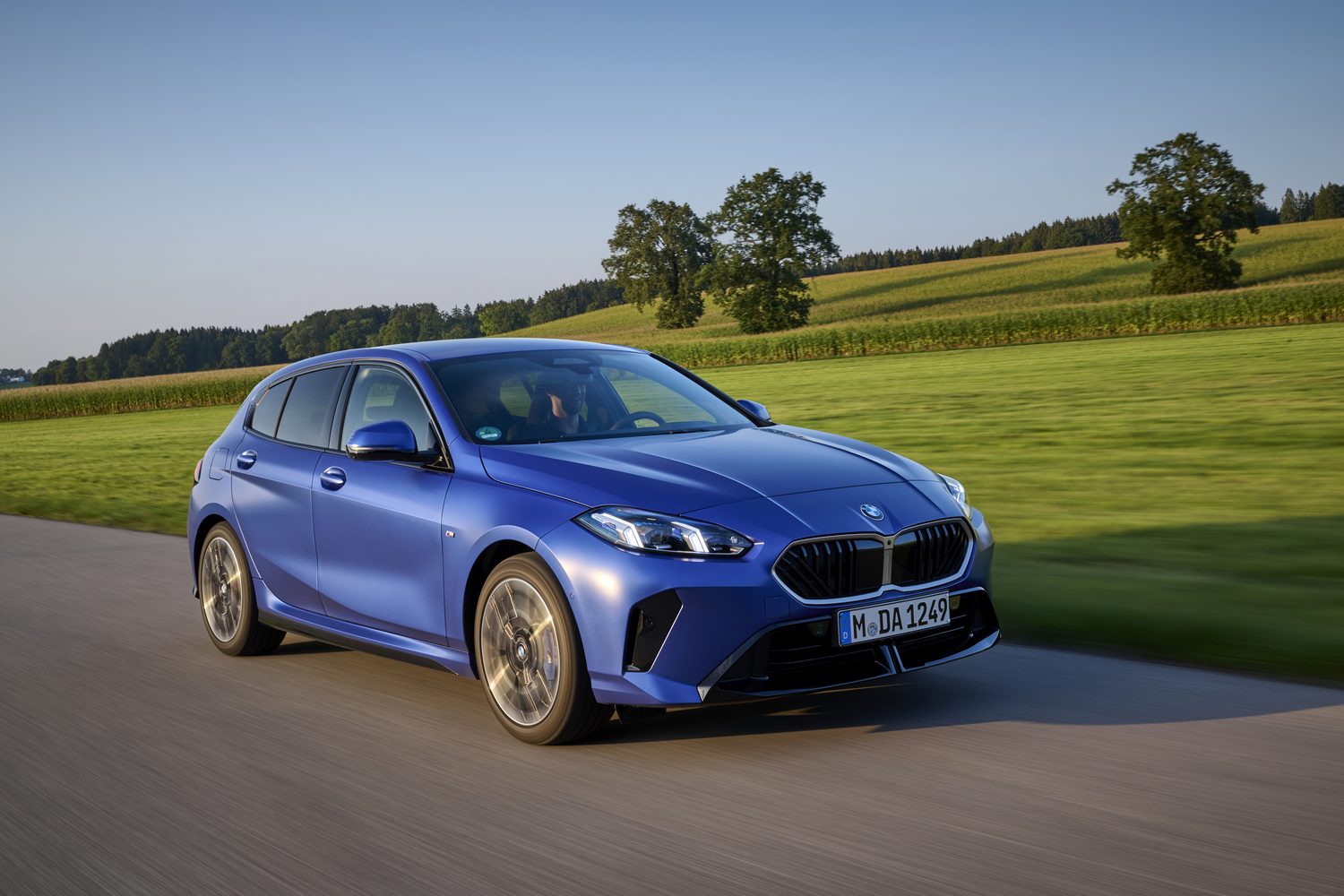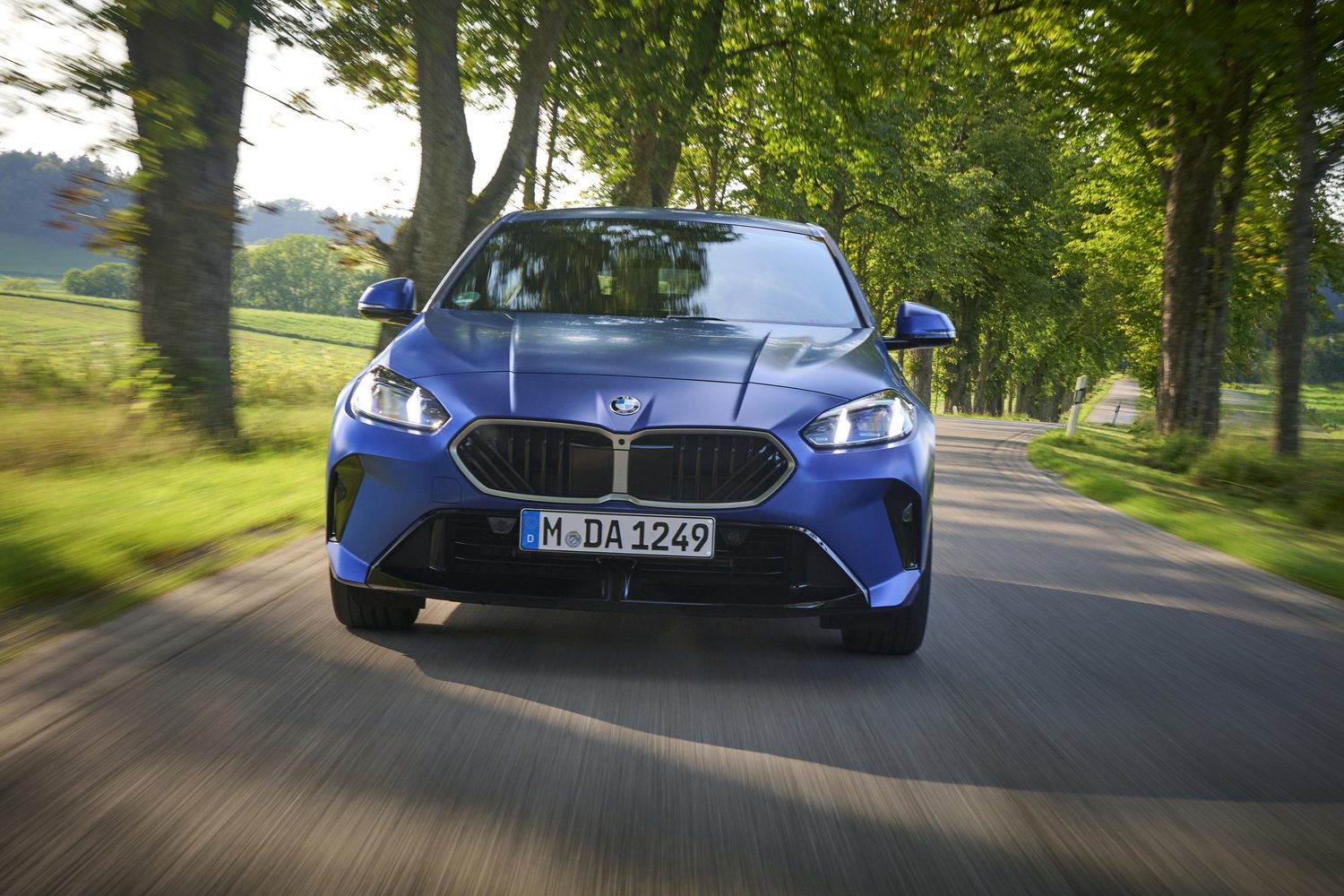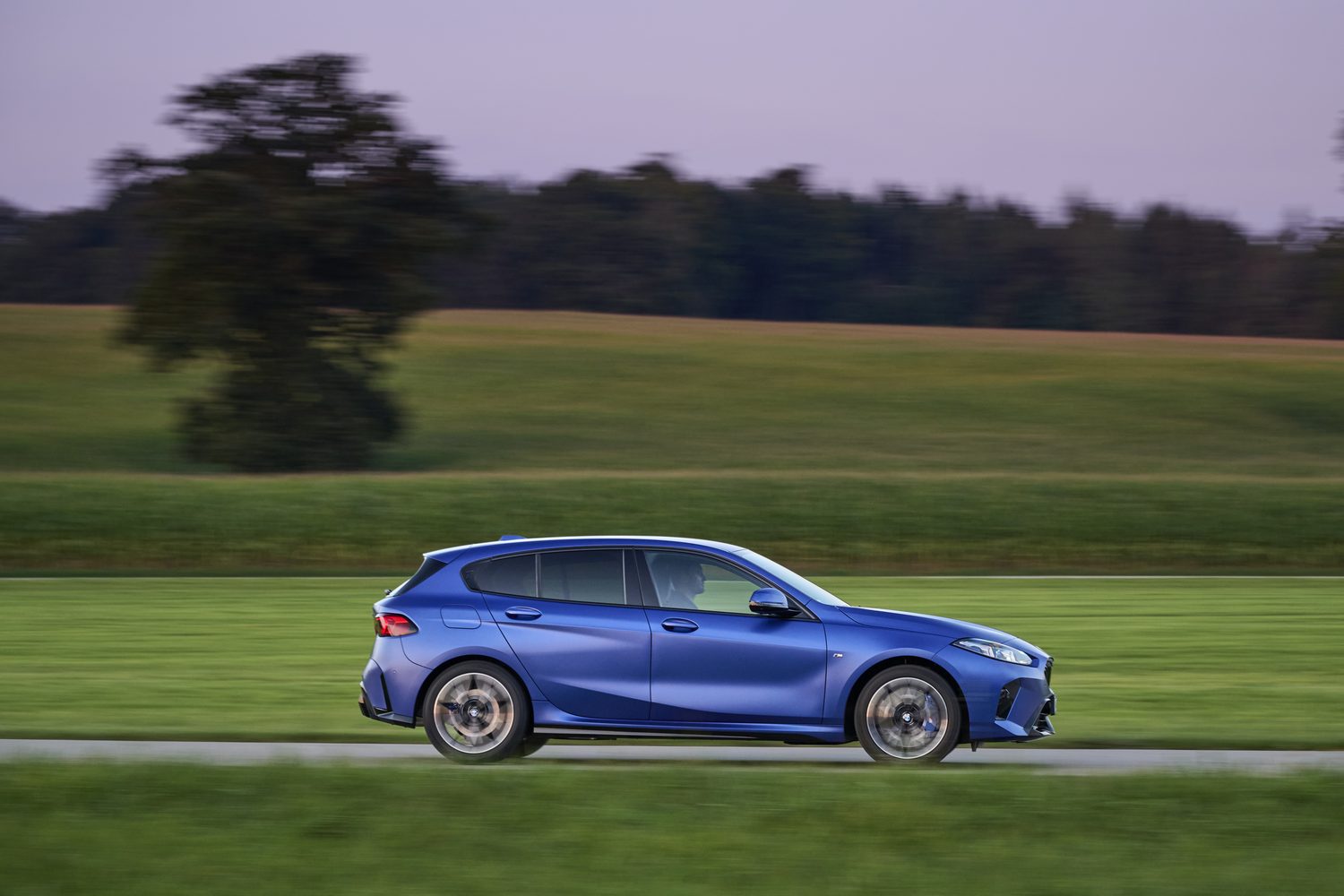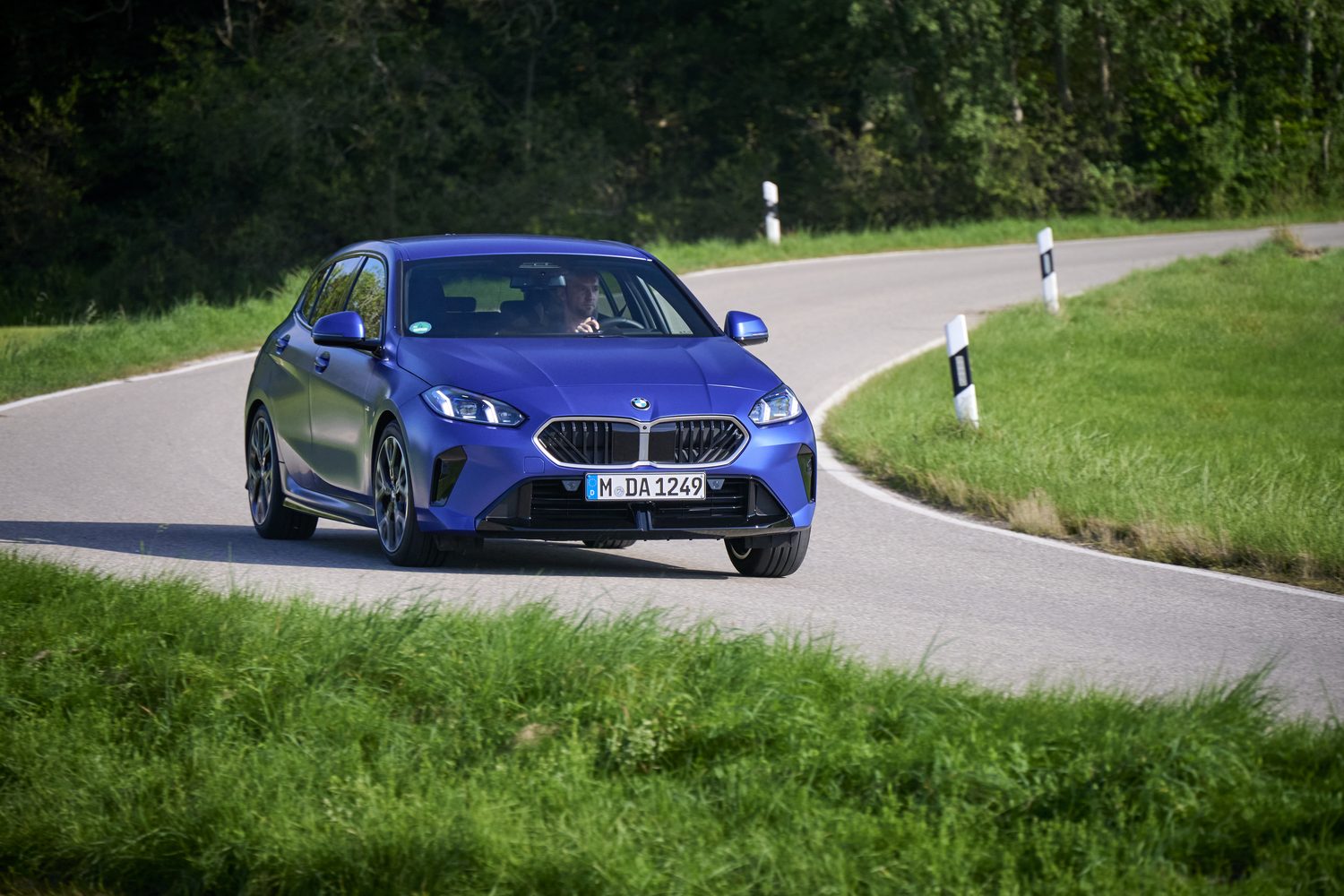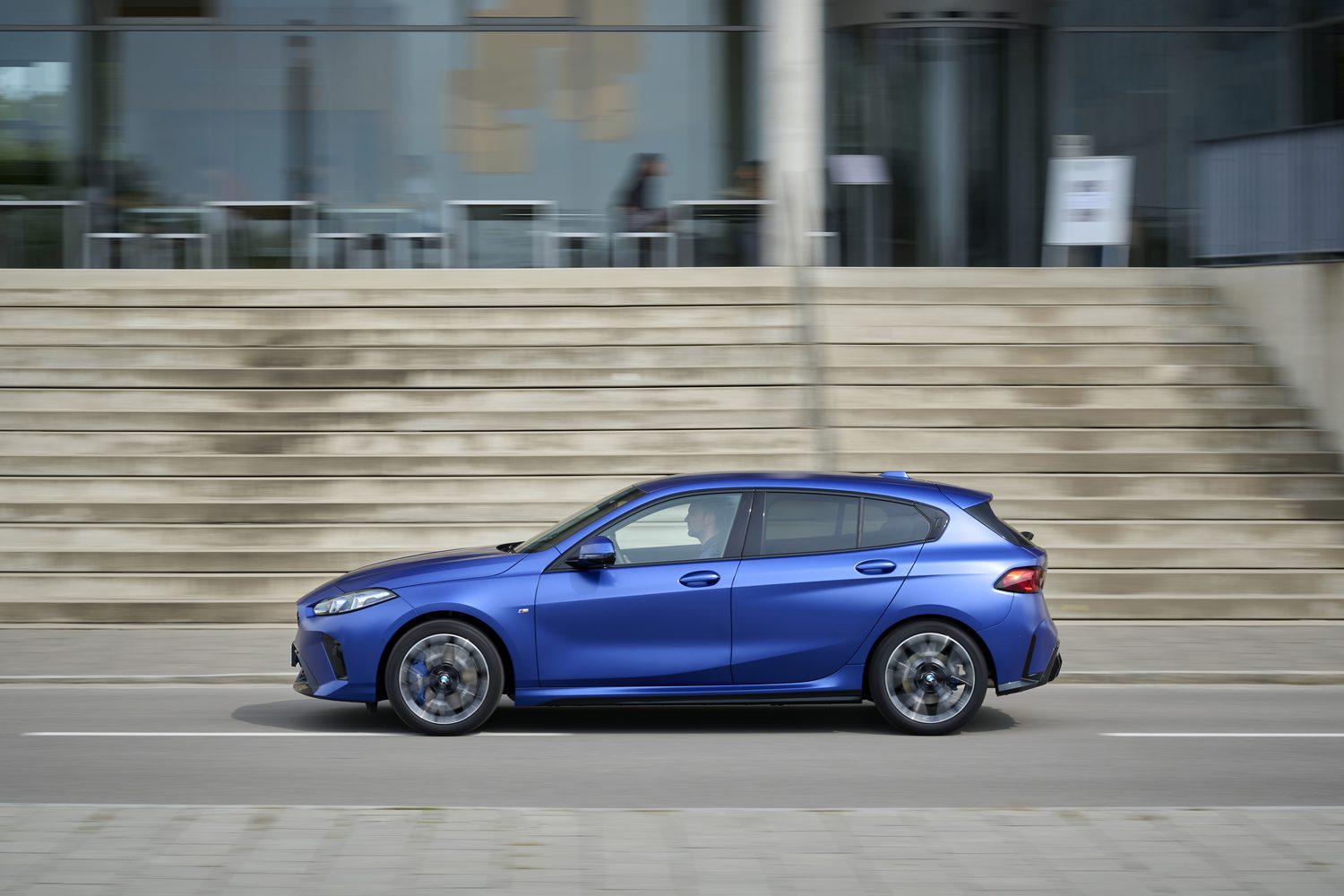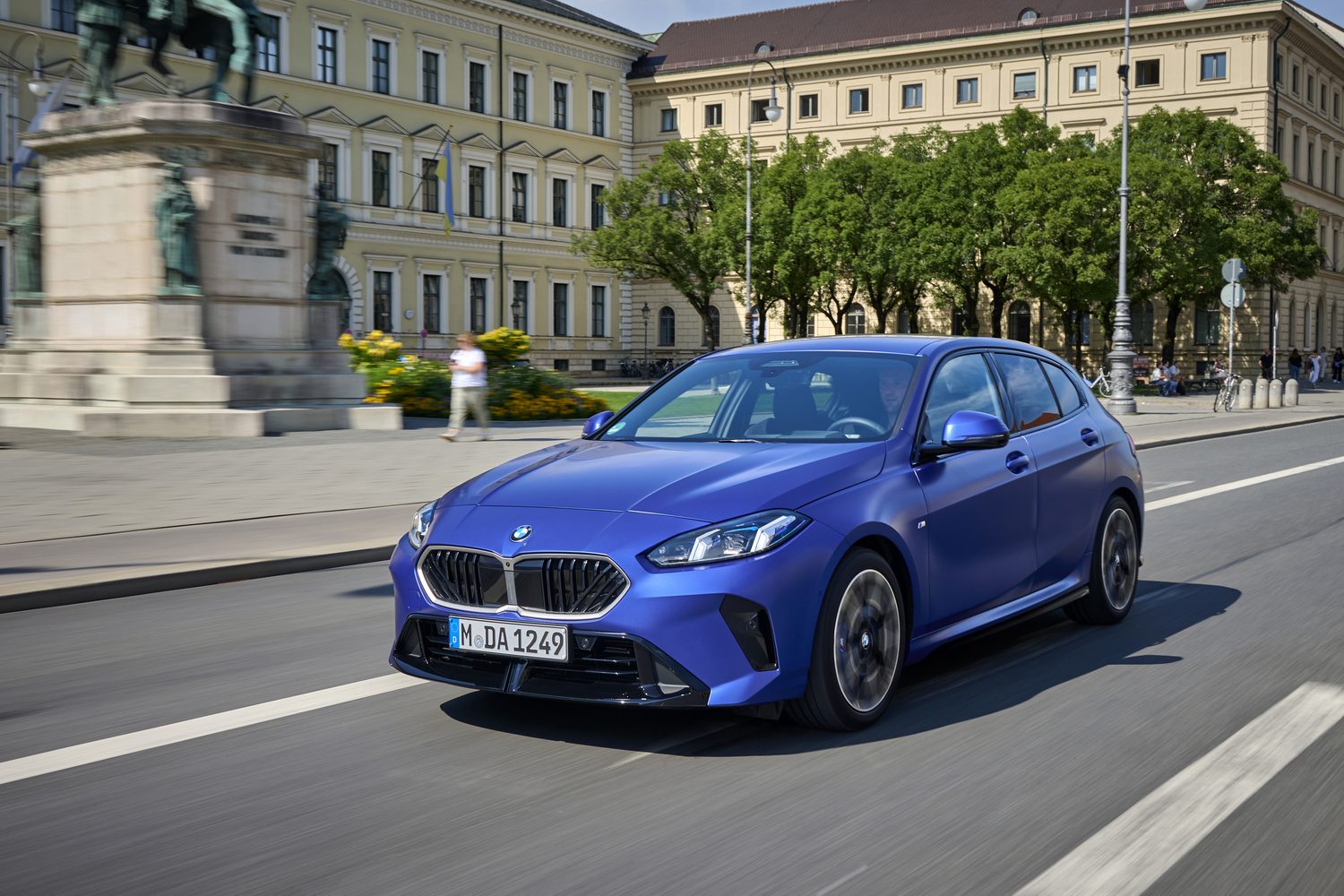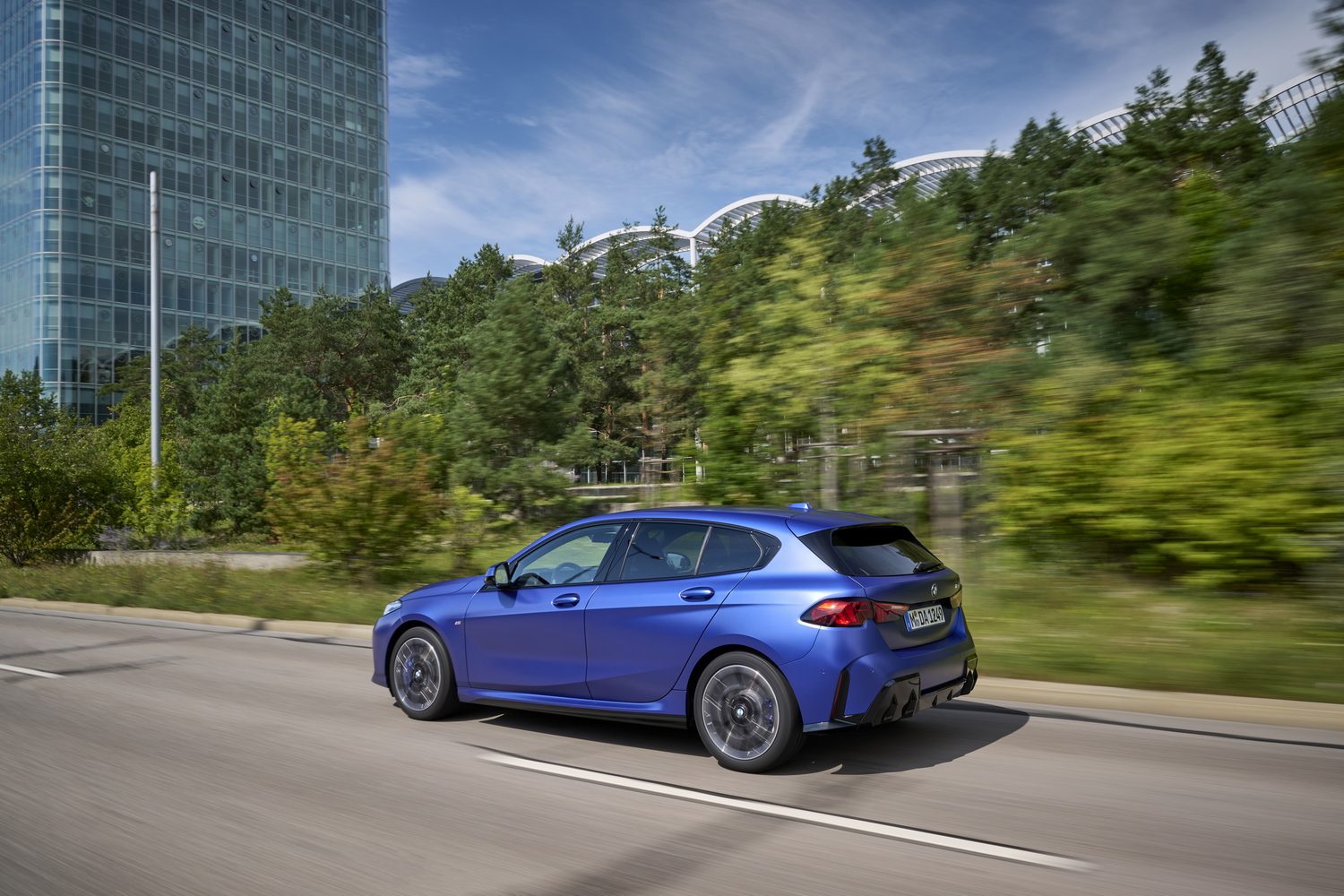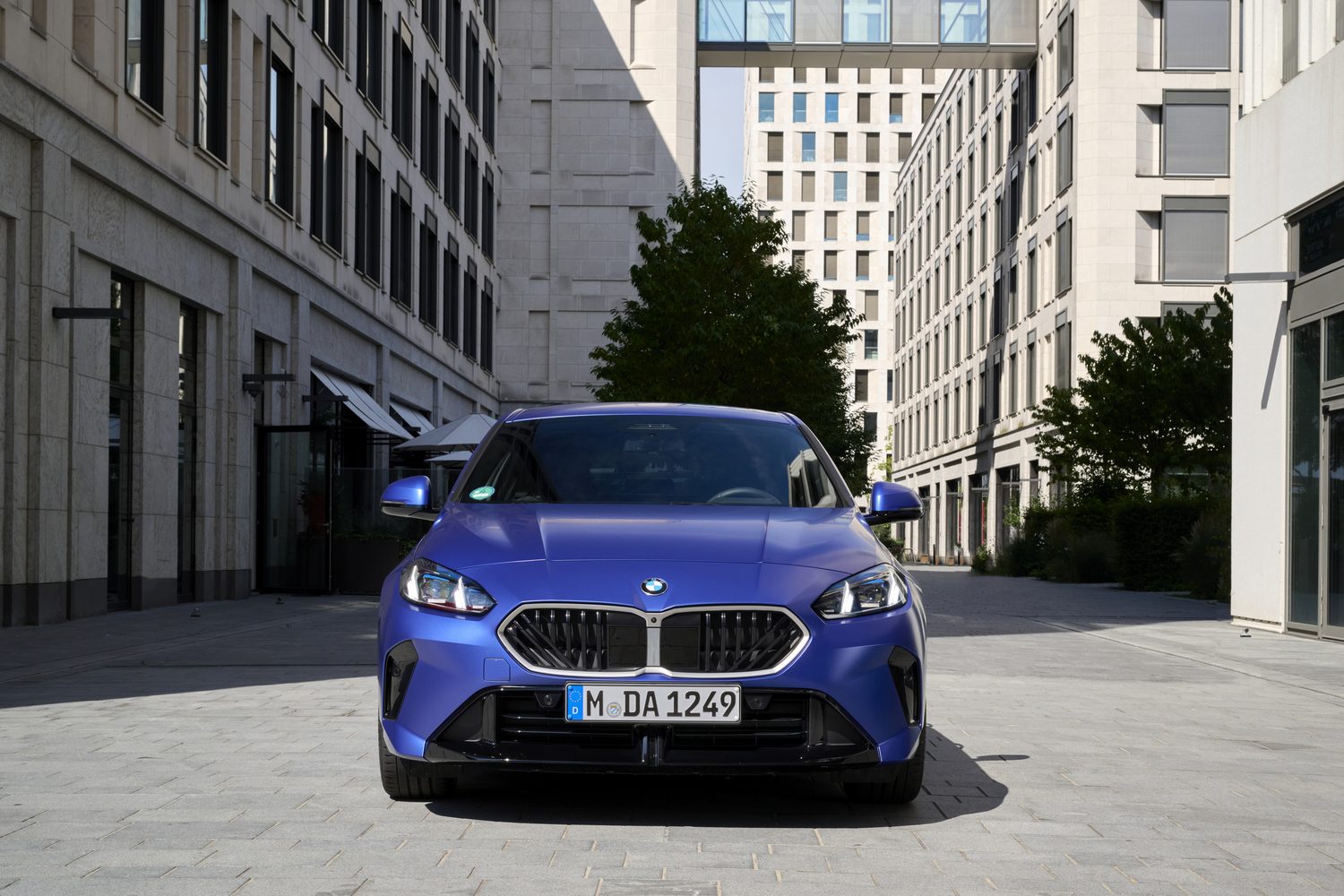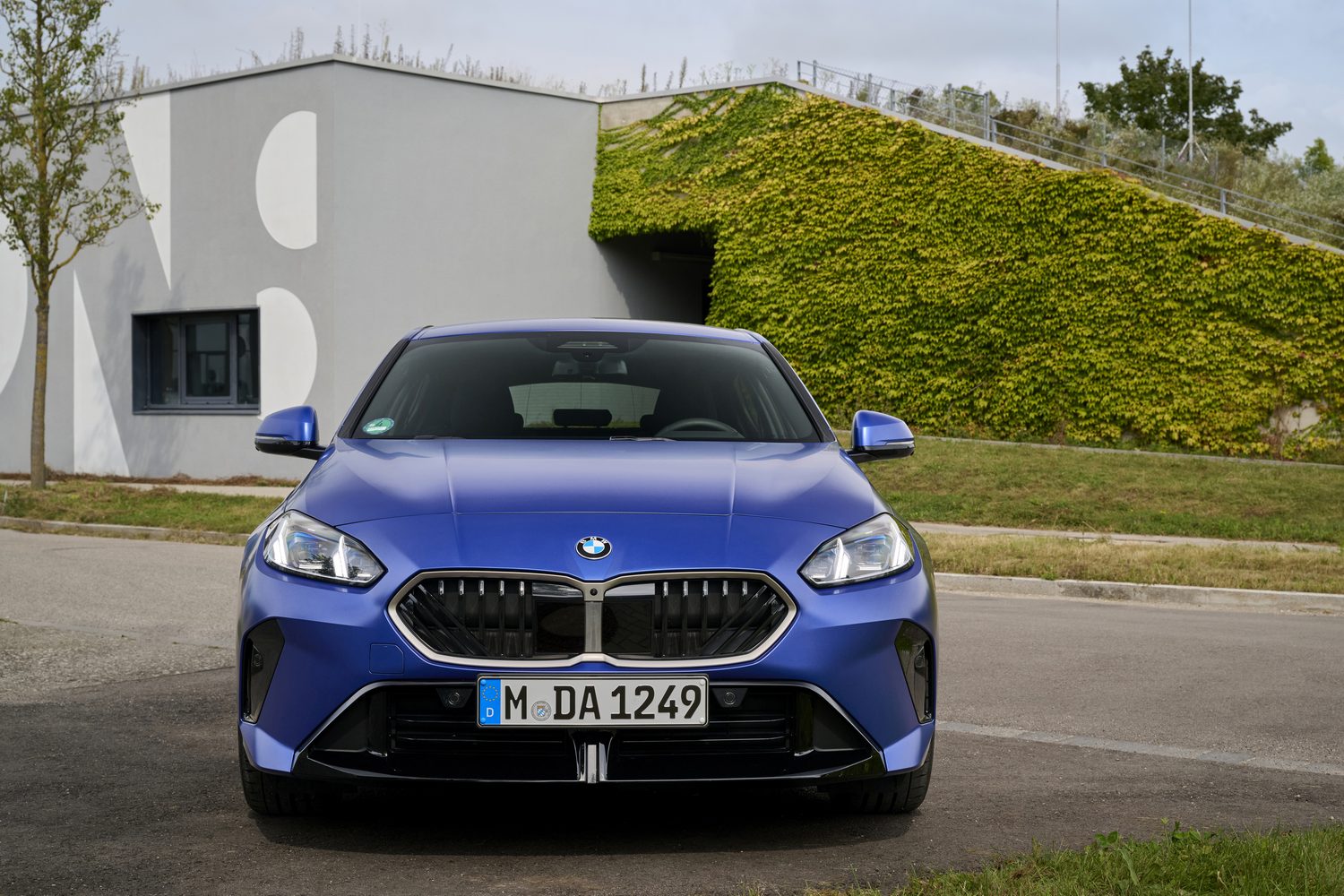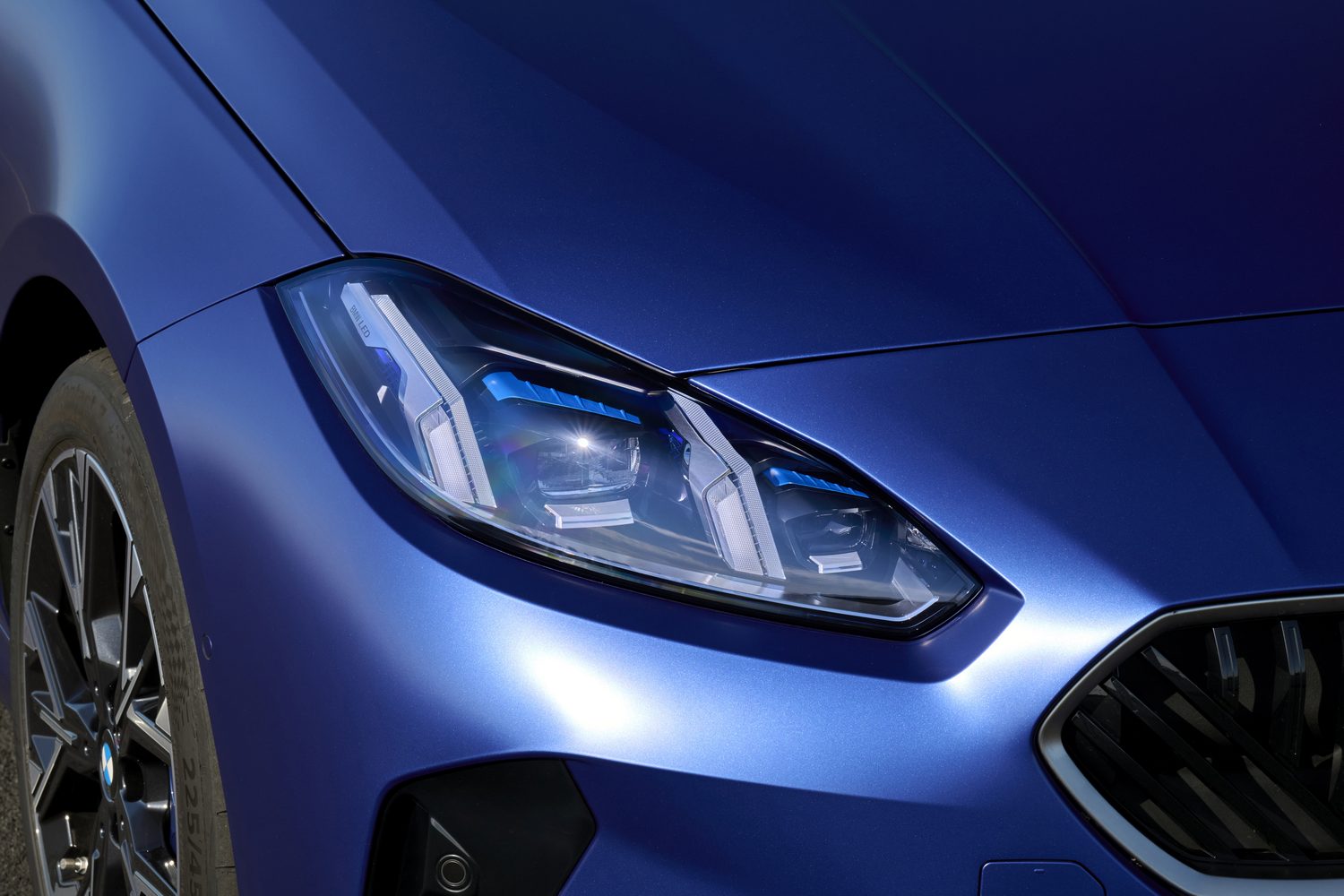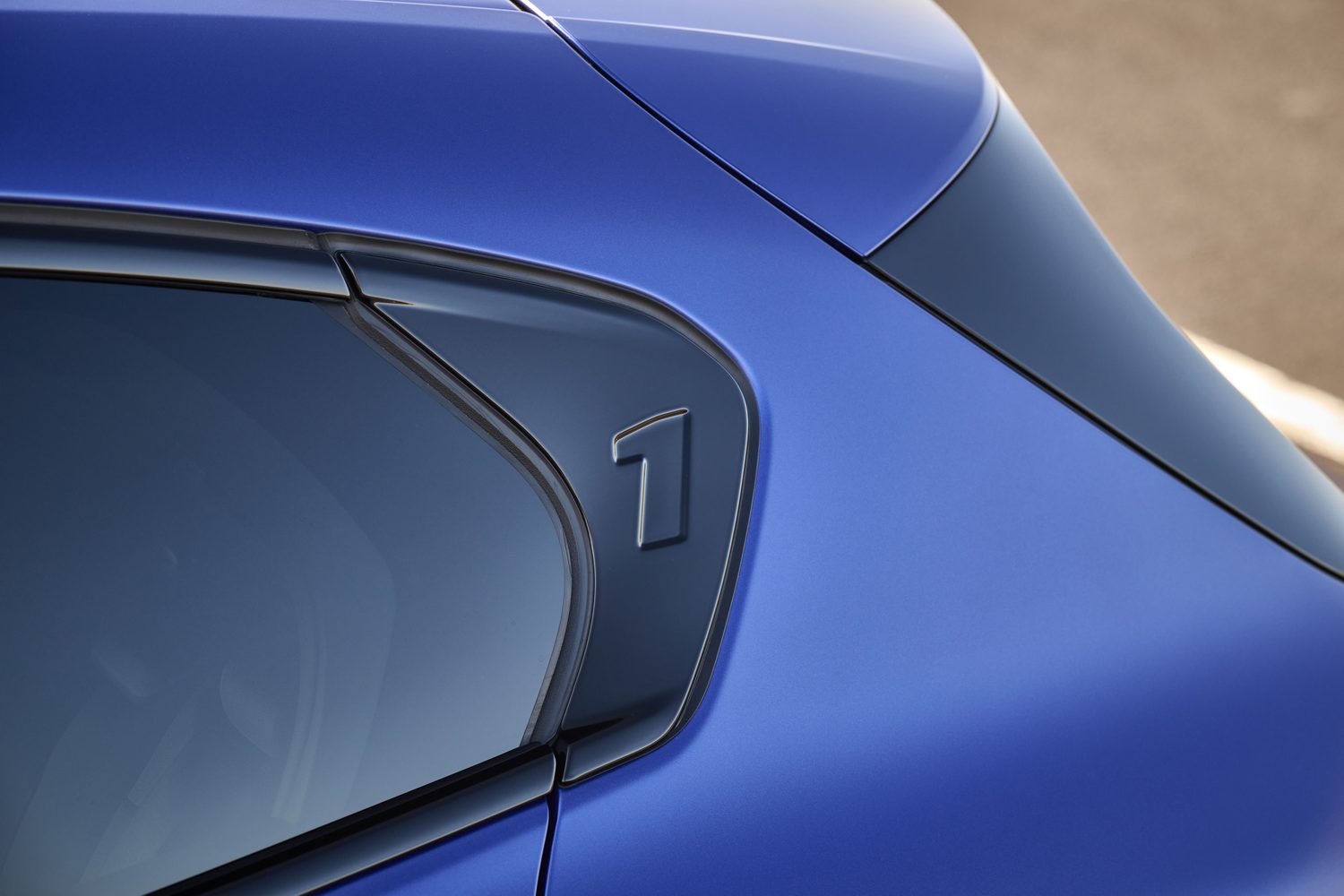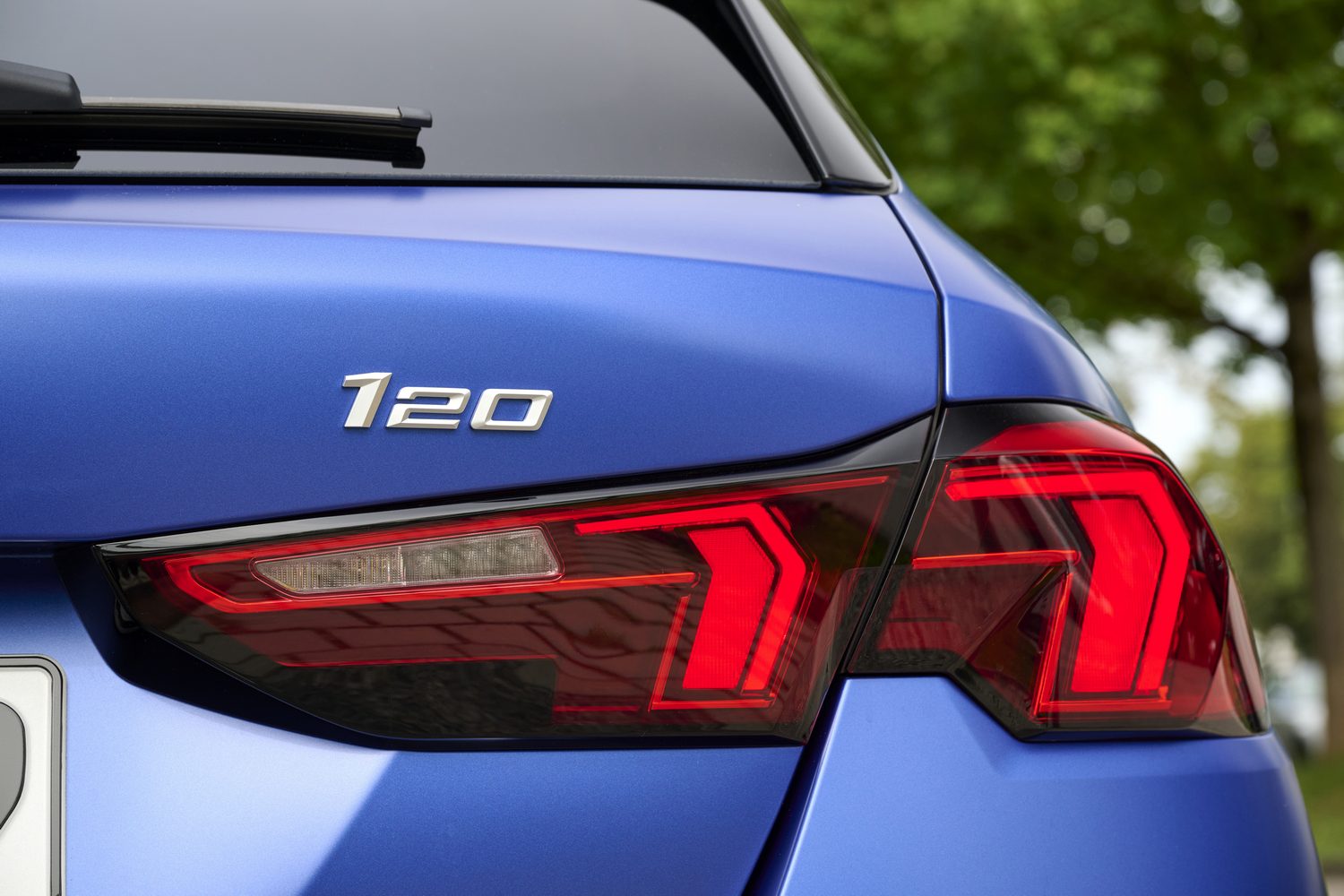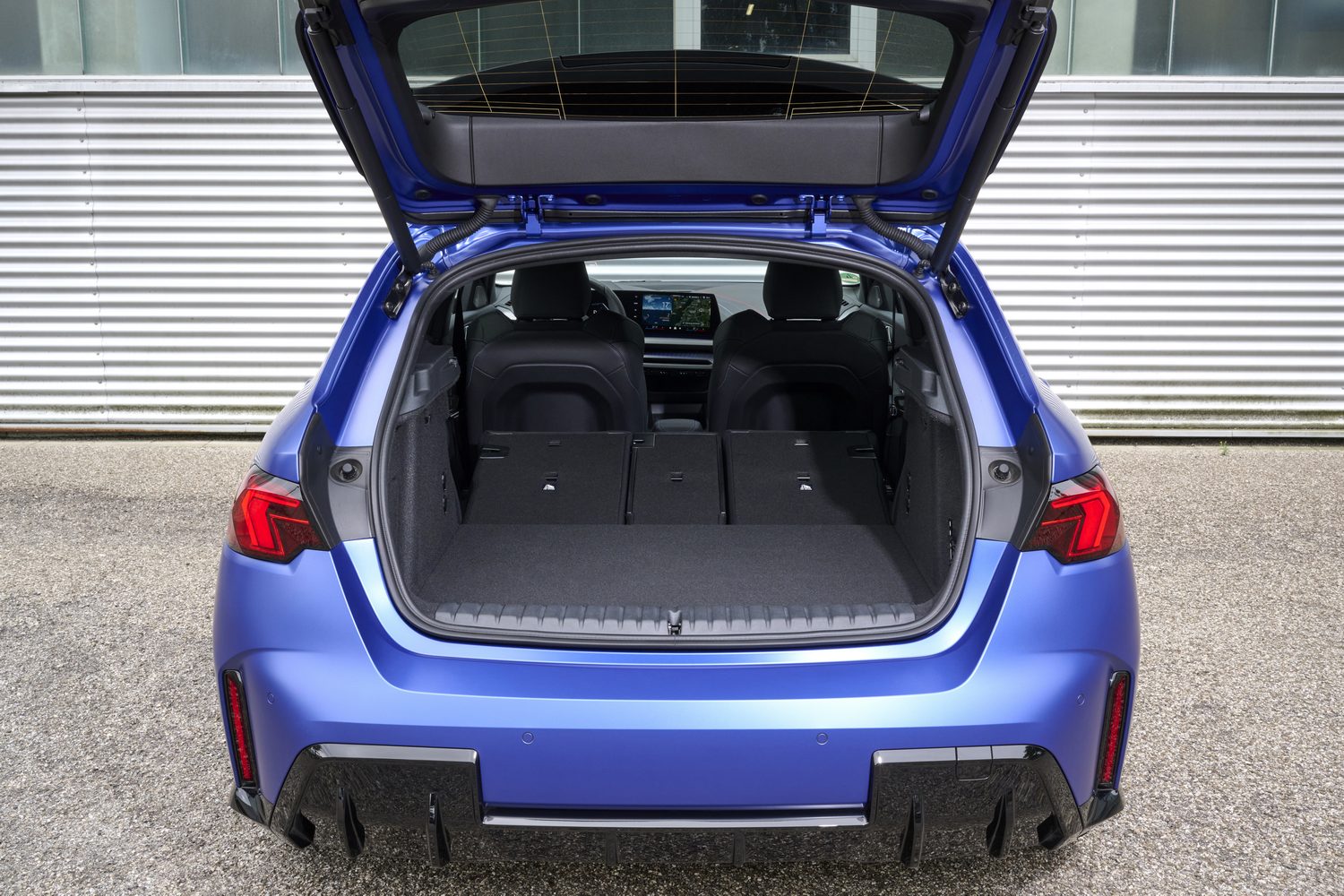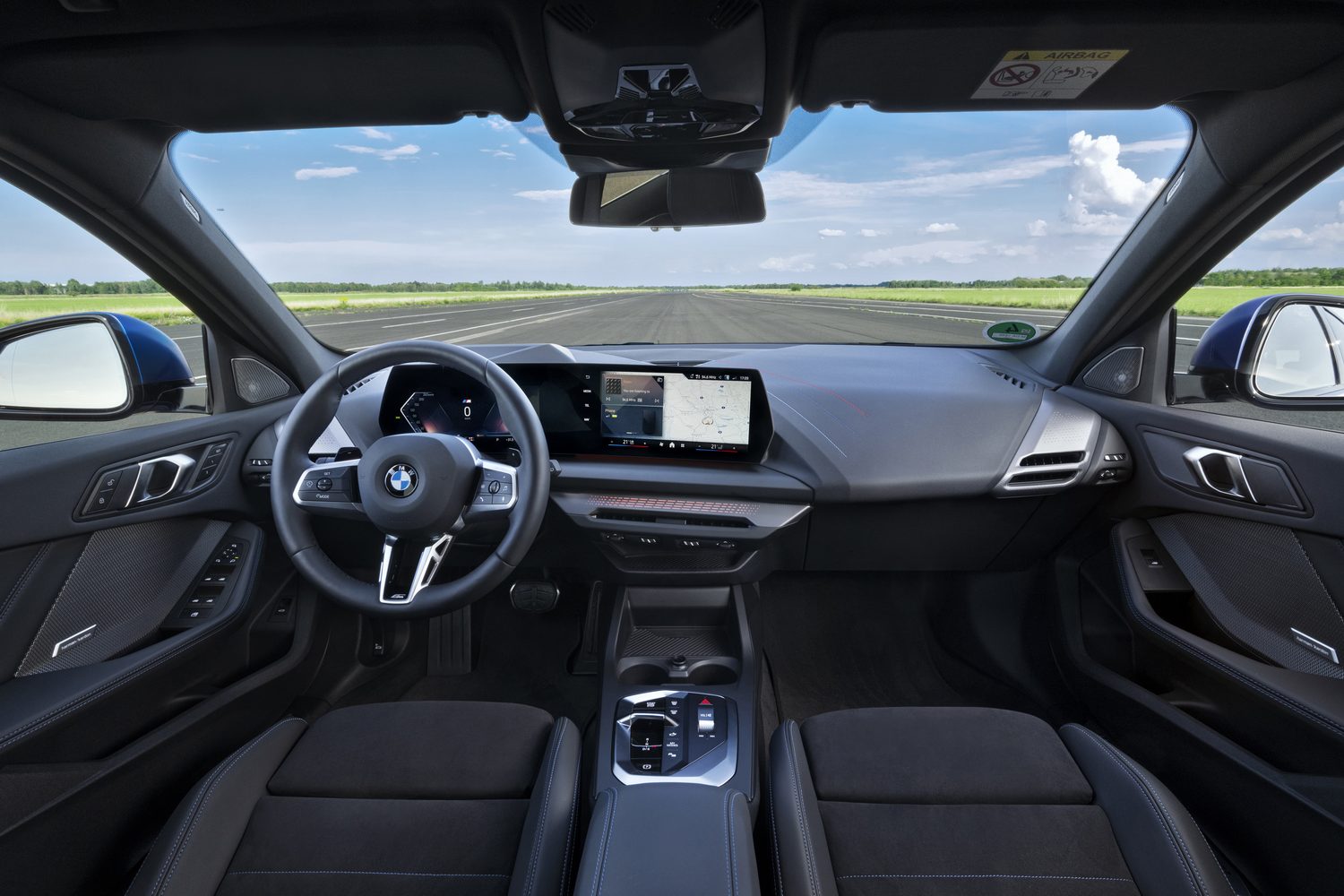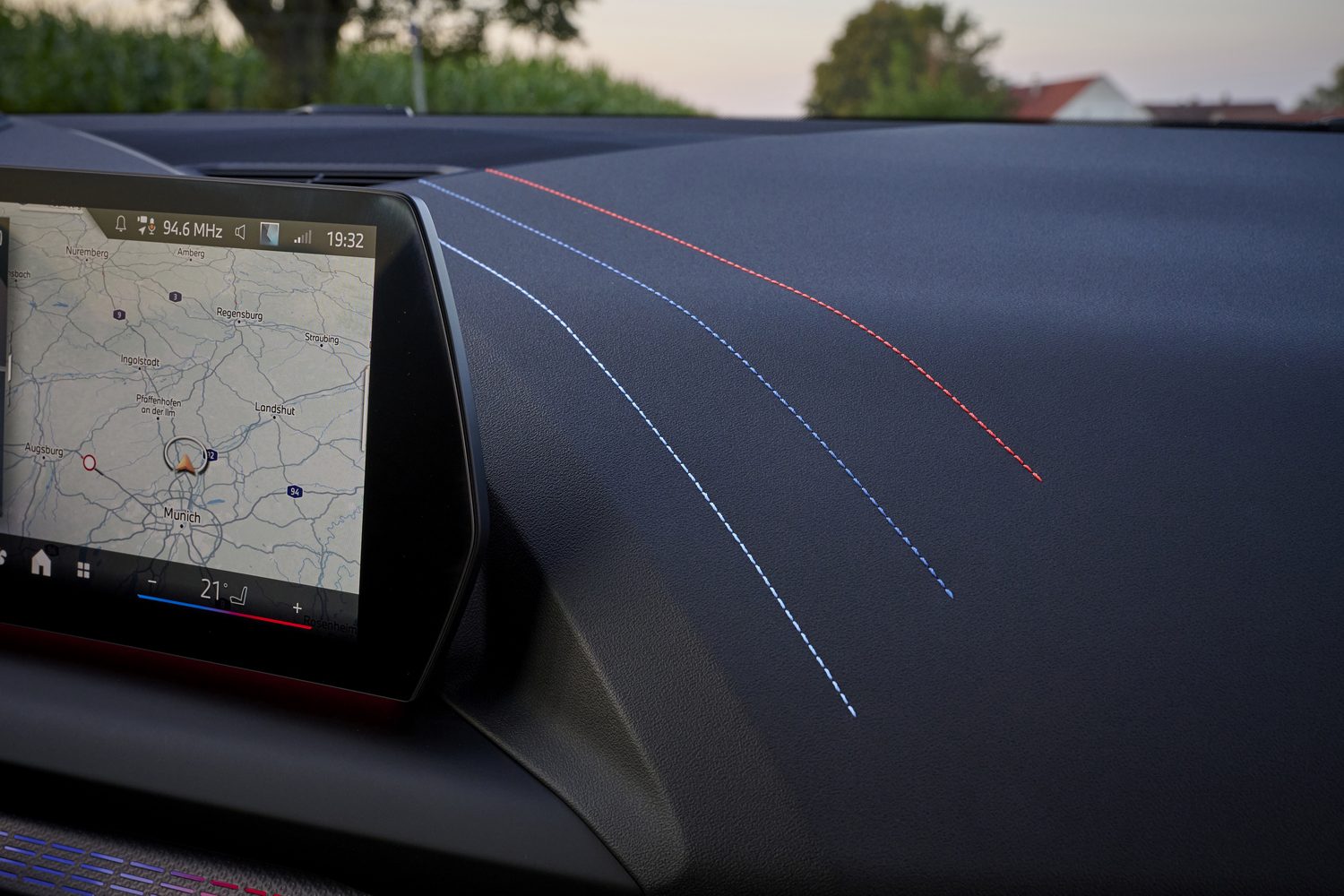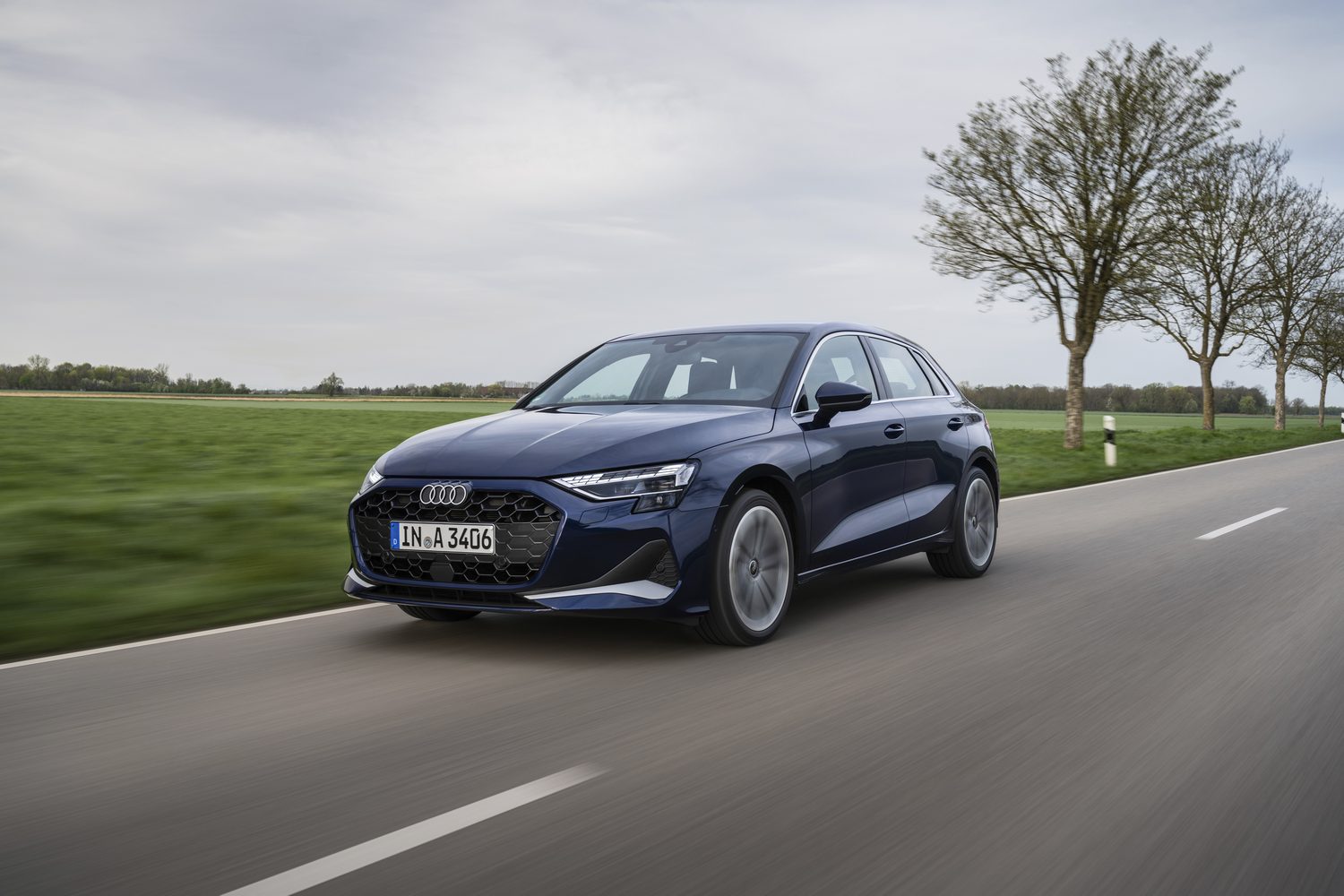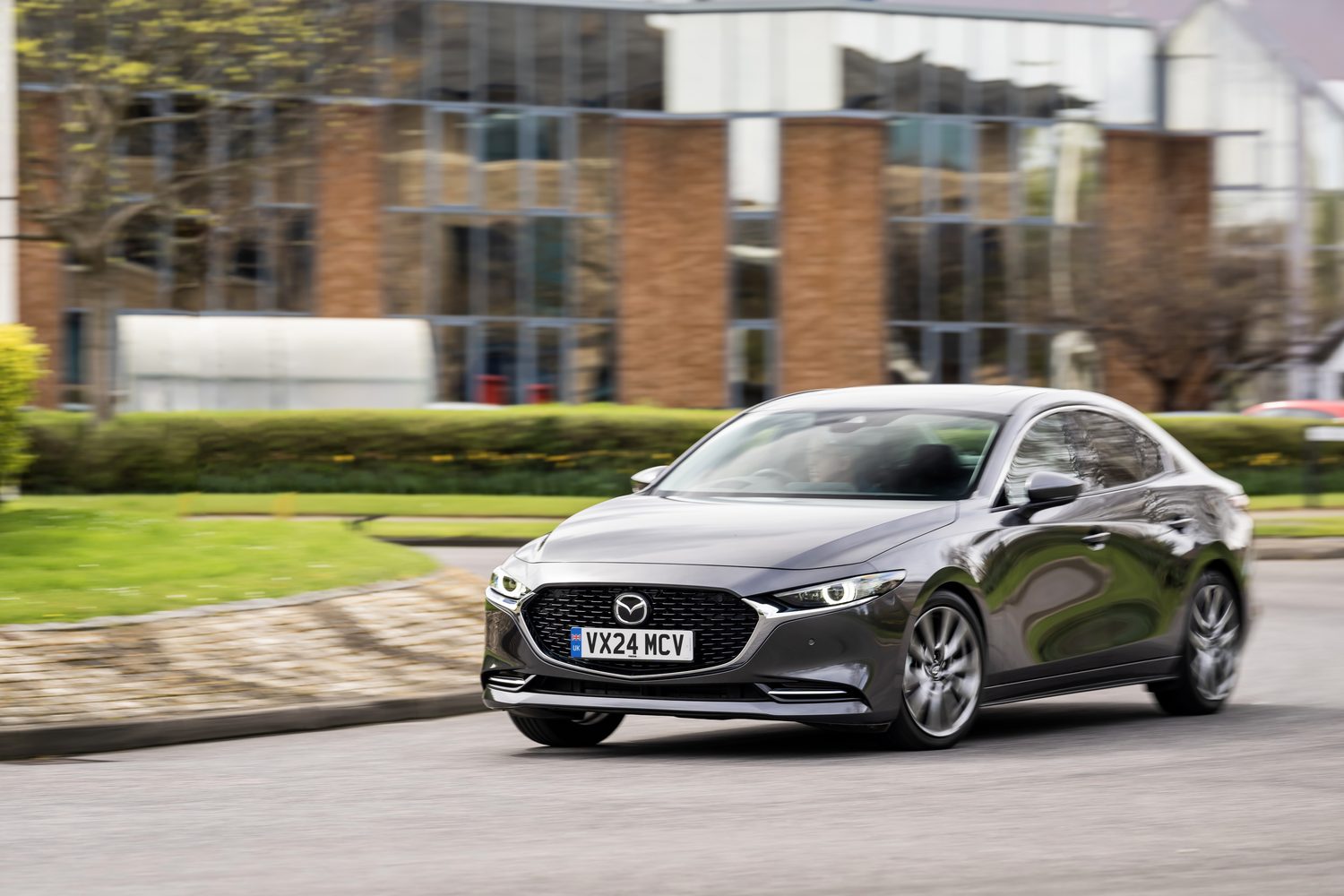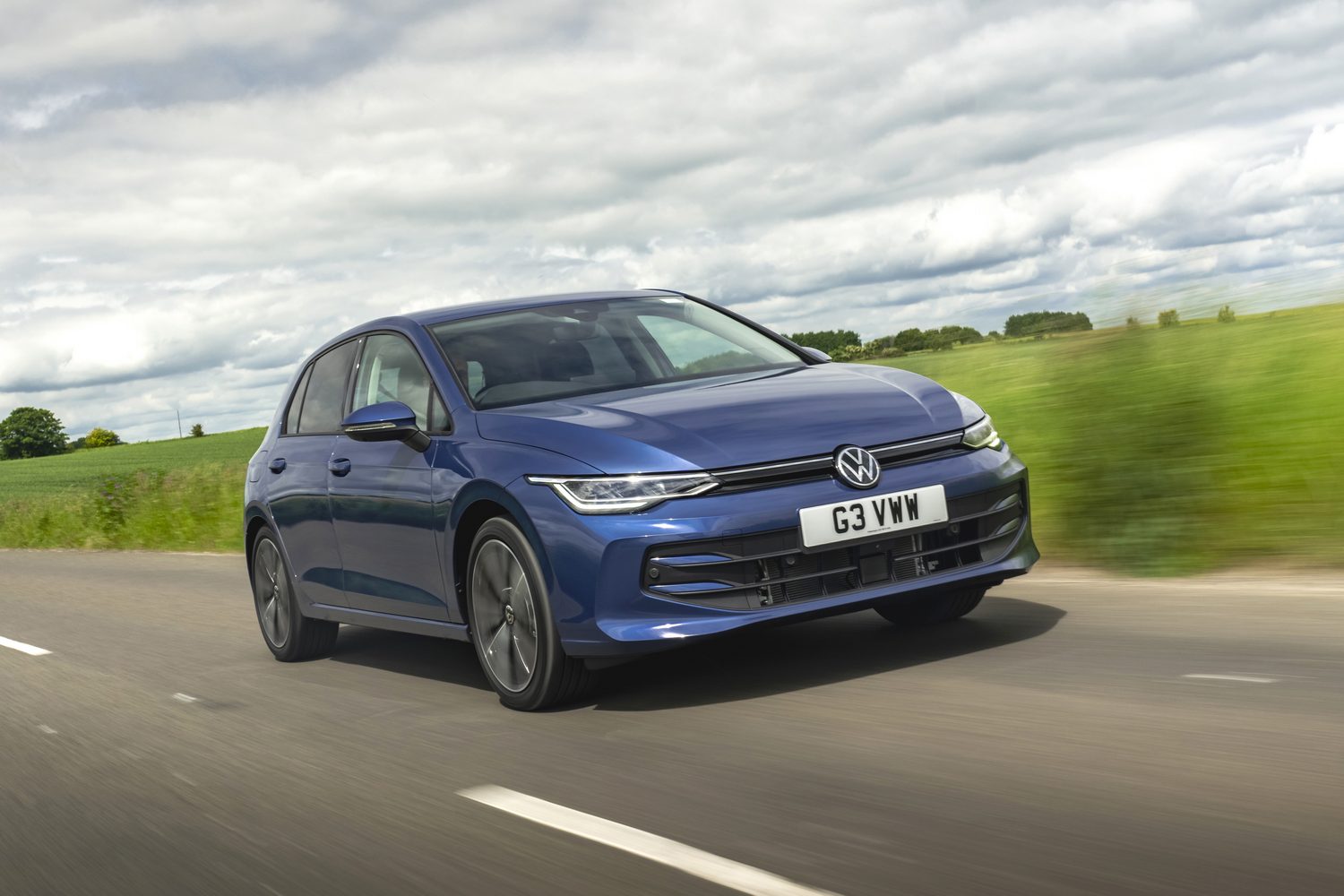The BMW 1 Series has been with us in one form or another for around 20 years now, and it has received a heavy update in time for 2025. Offering a fresh look that’s designed to feel sportier than that of its predecessor, the baby BMW is here to compete with the recently revamped Audi A3, Mercedes-Benz A-Class and the Volkswagen Golf.
But to do that, it needs more than just a new nose. So, BMW has updated the cabin with the latest technology and a new dashboard, as well as the option of new mild-hybrid technology in the engine bay. But will that be enough, or will the 1 Series be overtaken by its rivals?
Our first taste of the latest-generation 1 Series at its international media launch is in ‘120’ form, which sees the car powered by a 1.5-litre, mild-hybrid petrol engine. It’s expected to be a key player in the range, and one of the biggest sellers.
What does the new BMW 120 look like?
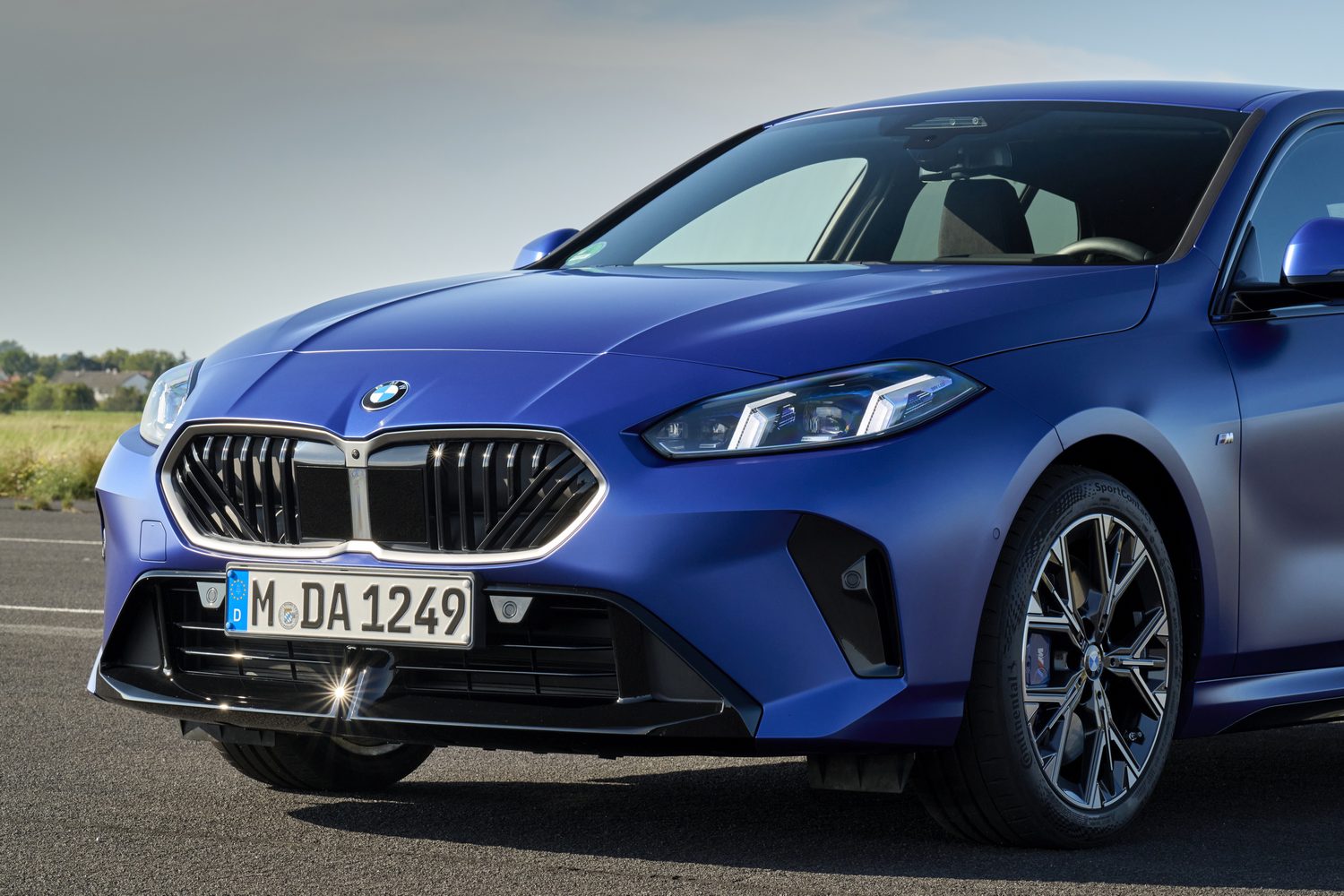
BMW has made significant changes to the exterior design of the 1 Series, with a new, low nose and sharp features, including a new interpretation of the firm’s kidney grille. To our eyes, it looks a bit odd, because the grille sits so far below the windscreen, but at least BMW has resisted the urge to oversize the grille. Sadly, it hasn’t resisted the urge to offer illumination around the grille, though, so there’s a thin strip of LEDs all the way around the nose that looks somewhat homemade.
At the back, the new 1 Series has a slightly more muscular look, complete with new two-part taillights. And this 120 version hides the exhaust behind a diffuser-style panel in the new rear bumper - whereas the sporty M135 gets a four-outlet exhaust system.
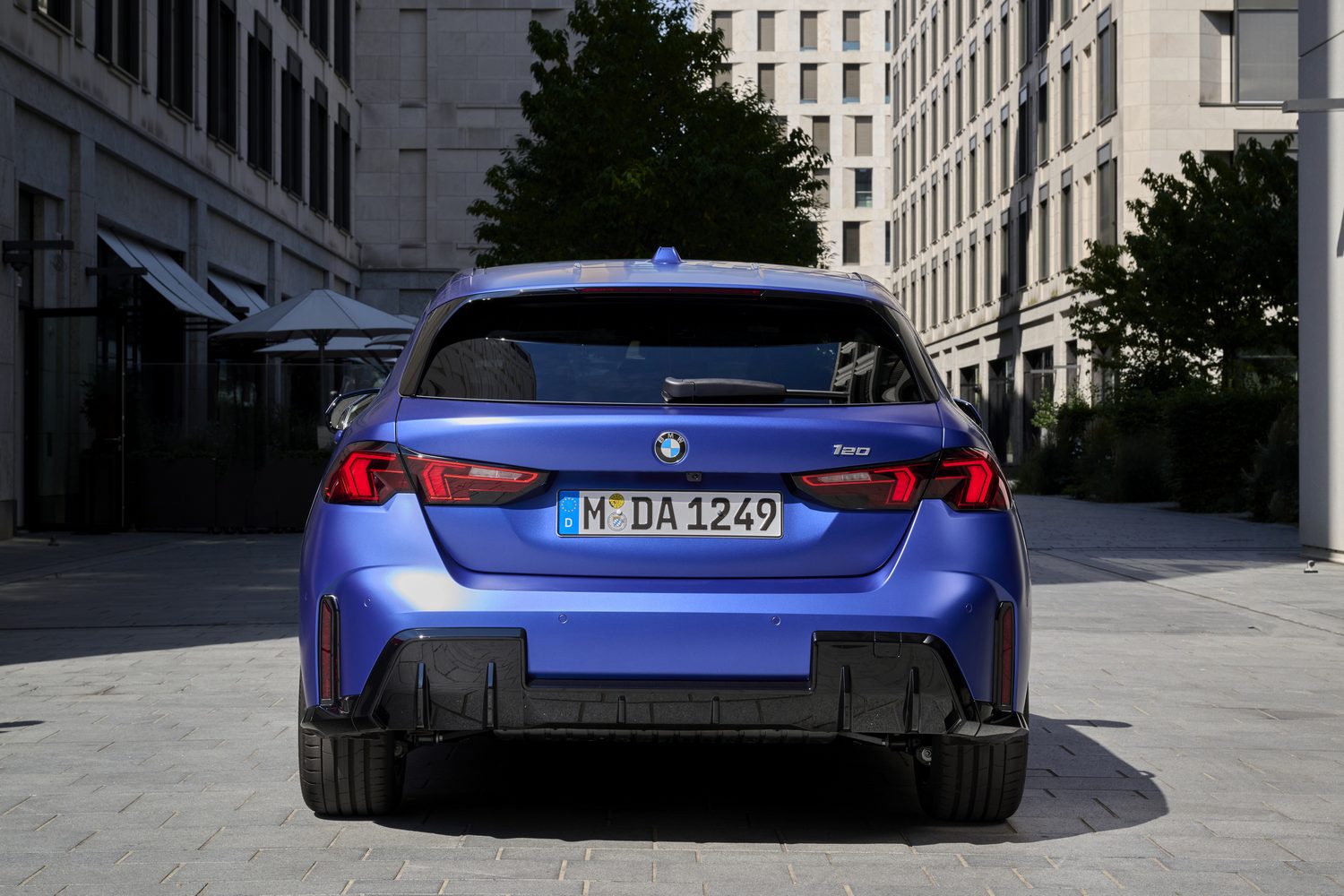
The image also depends slightly on which trim level you choose, but the basic Sport has a classier design with silver trim around the grille and smaller alloys, whereas the M Sport gets black exterior trim, bigger wheels and sporty bumpers.
A look inside the BMW 120
As is the modern way, the 1 Series’ cabin has been cleaned up a bit, with BMW describing it as “calmer” than before. As a result, there’s a very minimalist dashboard that’s accented with aluminium and is almost completely devoid of buttons. BMW claims that’s a design-led decision, but the quality of some of the plastics suggests cost pressures were also a consideration.
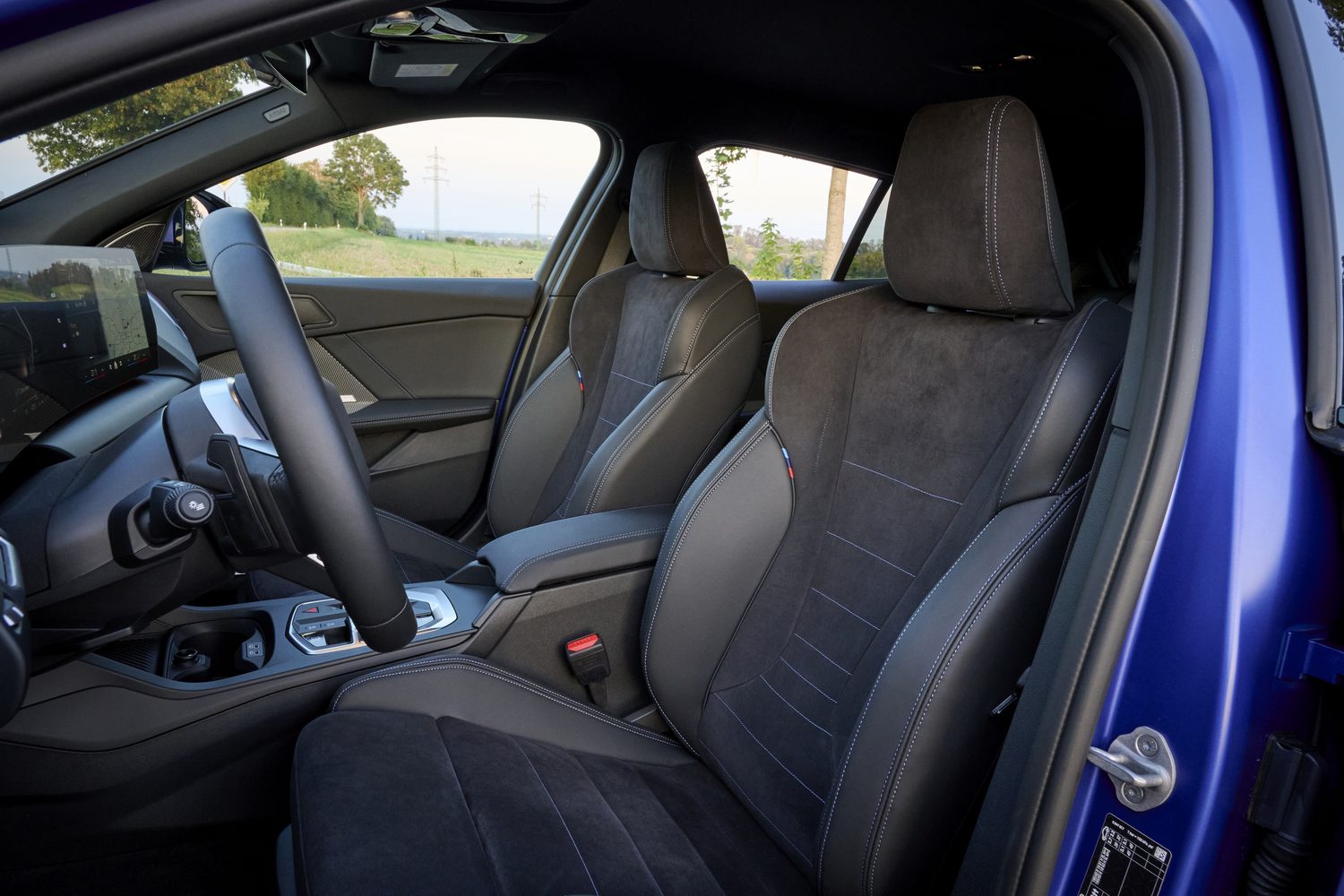
At this price point, some cost-saving measures are to be expected - especially lower down in the cabin where you never touch anything - but BMW has made some very odd decisions with the materials used. For example, the air vent controls feel really cheap, which is a strange choice when they’re something you use regularly, and the plastic around the centre console feels really low-rent. Fortunately, almost everything that moves - whether it’s the door catches or the steering wheel controls - feels nice and solid, which maintains the car’s premium image.
It feels modern, too. We particularly like the integration of the ambient lighting into the aforementioned aluminium trim, which is much better than the plasticky light bars in the BMW 5 and 7 Series models. The ‘Curved Display’ that contains both the touchscreen and the digital instrument display in one big housing is a success for the most part, too.
The cabin is reasonably spacious, as well, although it doesn’t really impress compared with other family hatchbacks. You can carry four adults quite happily, but the very tallest rear-seat passengers won’t find much wriggle room back there. And then there’s the boot space. Opt for a purely petrol-powered 1 Series (for the time being, the only option on that front is the go-faster M135 version), and you get 380 litres of boot space, which is roughly on a par with the Volkswagen Golf. But with the mild-hybrid system in the 120, there’s only 300 litres of official luggage capacity and a pitifully small underfloor storage area. There’s more space in a SEAT Ibiza, and that might put some buyers off.
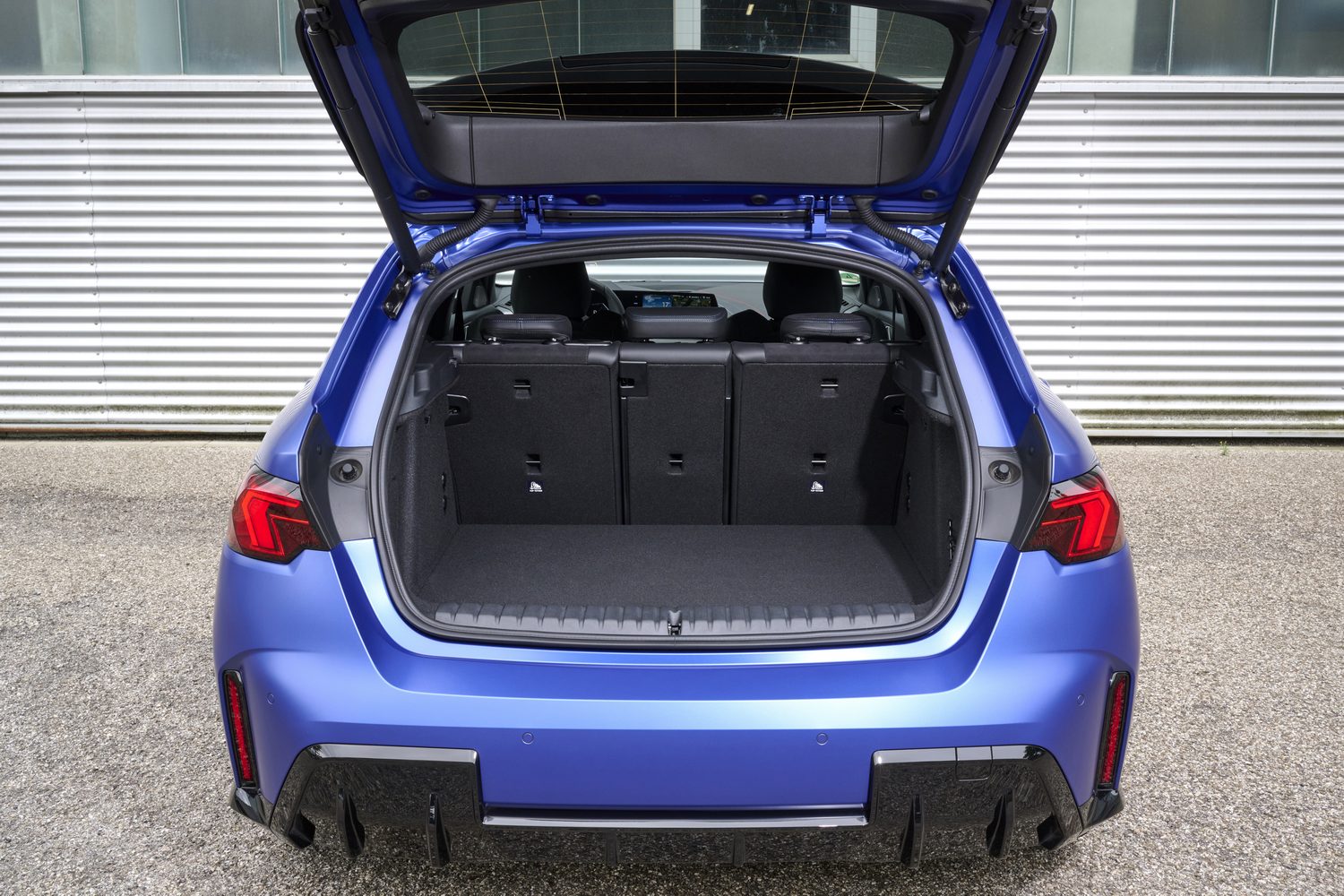
The BMW 120’s on-board technology
Because BMW has decluttered the 1 Series’ cabin so much, the importance of the touchscreen has only increased. In a bid to make sure it’s up to the job, BMW has given the car its latest ‘Operating System 9’ software, which means you get a pair of sharp and bright screens inside the massive Curved Display.
Let’s start with the positives. The screens both look great, and the menus are logically laid out, while the digital instrument display comes with lots of useful configuration options so you can arrange it the way you like it. The optional head-up display is also very clever, and its layout changes depending on which driving mode you’re in.
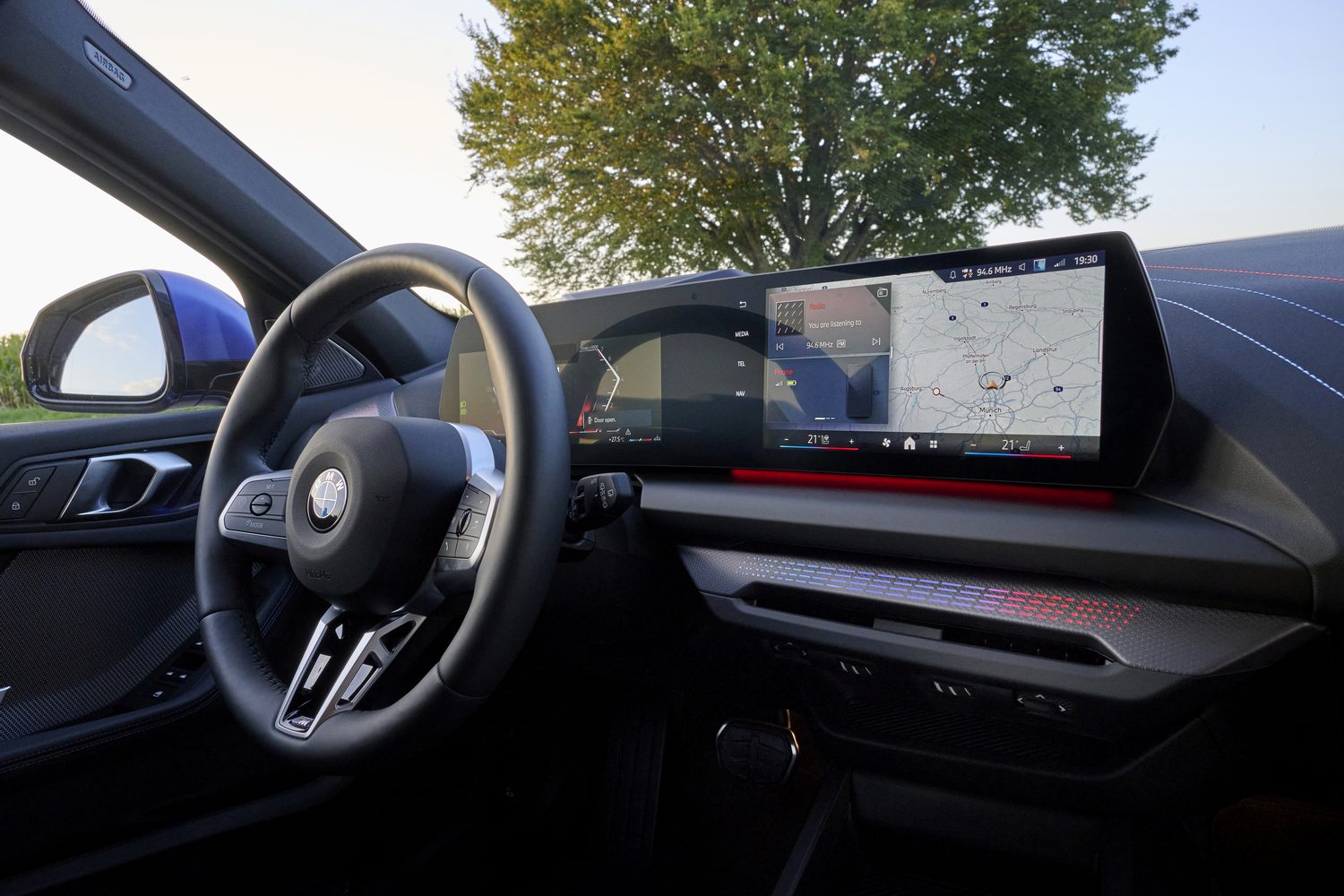
But for all those good points, there are issues. Chief among which is the decision to get rid of all climate control switchgear, leaving drivers and passengers forced to use the touchscreen for something as simple as turning up the temperature a few degrees. While BMW’s implementation of the system is better than some - temperature and seat heating controls are always visible on the screen, no matter whether you’re using navigation, media displays or browsing a menu - it’s still more distracting than a button or even a rotary dial.
Similarly, the driving modes are also controlled via the screen, and though there’s a button on the centre console to access those, you have to pick through them on the screen, forcing your eyes off the road. And once you’ve picked your mode, the screen won’t automatically revert back to whatever you were doing before, which necessitates more time staring at the screen and less time looking outside. Physical buttons may not be cheap or easy on the eye, but they are useful.
How efficient is the BMW 120?
At launch, 1 Series customers face a straight choice between the basic 120 tested here and the M135 xDrive model that heads up the range as a hot-hatchback rival to the Audi S3 and Volkswagen Golf R. The M135 will get its own review, but most buyers will stick with this, the 120. And they’ll be happy to do so because it’s a very capable car.
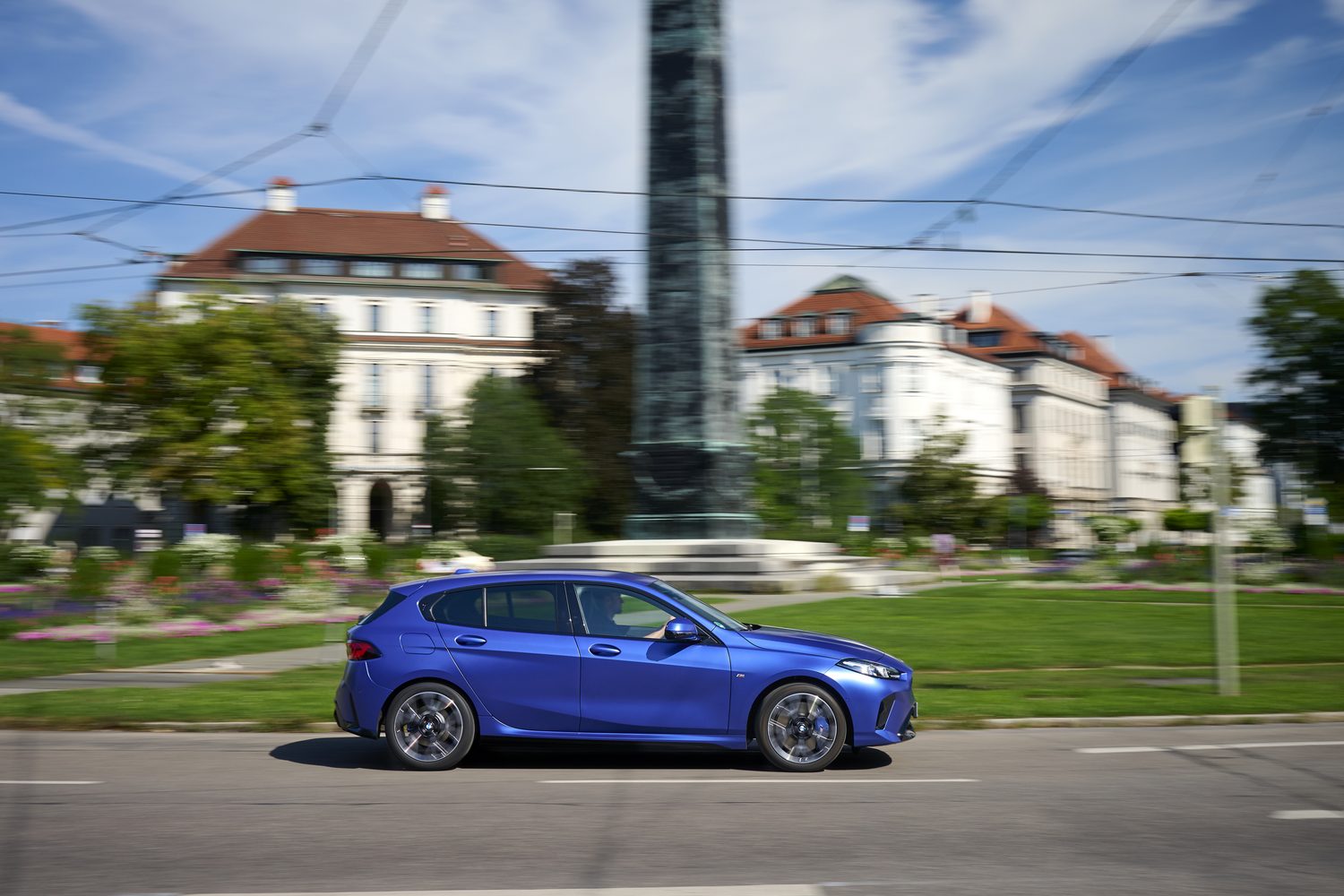
A 1.5-litre, three-cylinder petrol engine with a turbocharger and fuel-saving mild-hybrid technology, it’s quiet, efficient and has plenty of performance, which makes it a great all-rounder. On a long run, it’ll burn five or six litres of unleaded every 100km, which is respectable for a car with 170hp and an eight-speed automatic gearbox fitted as standard. Some will lament the lack of a diesel or even plug-in hybrid option, but for private consumers, the 120 will be perfectly adequate.
Especially given its performance. There’s more than enough get-up-and-go to keep up with traffic, and the official figures back that up, while the three-cylinder engine makes a smooth and refined thrum when it’s pushed. That means it’s not only more refined than most of its four-cylinder rivals, but more characterful, too.
Driving the BMW 120
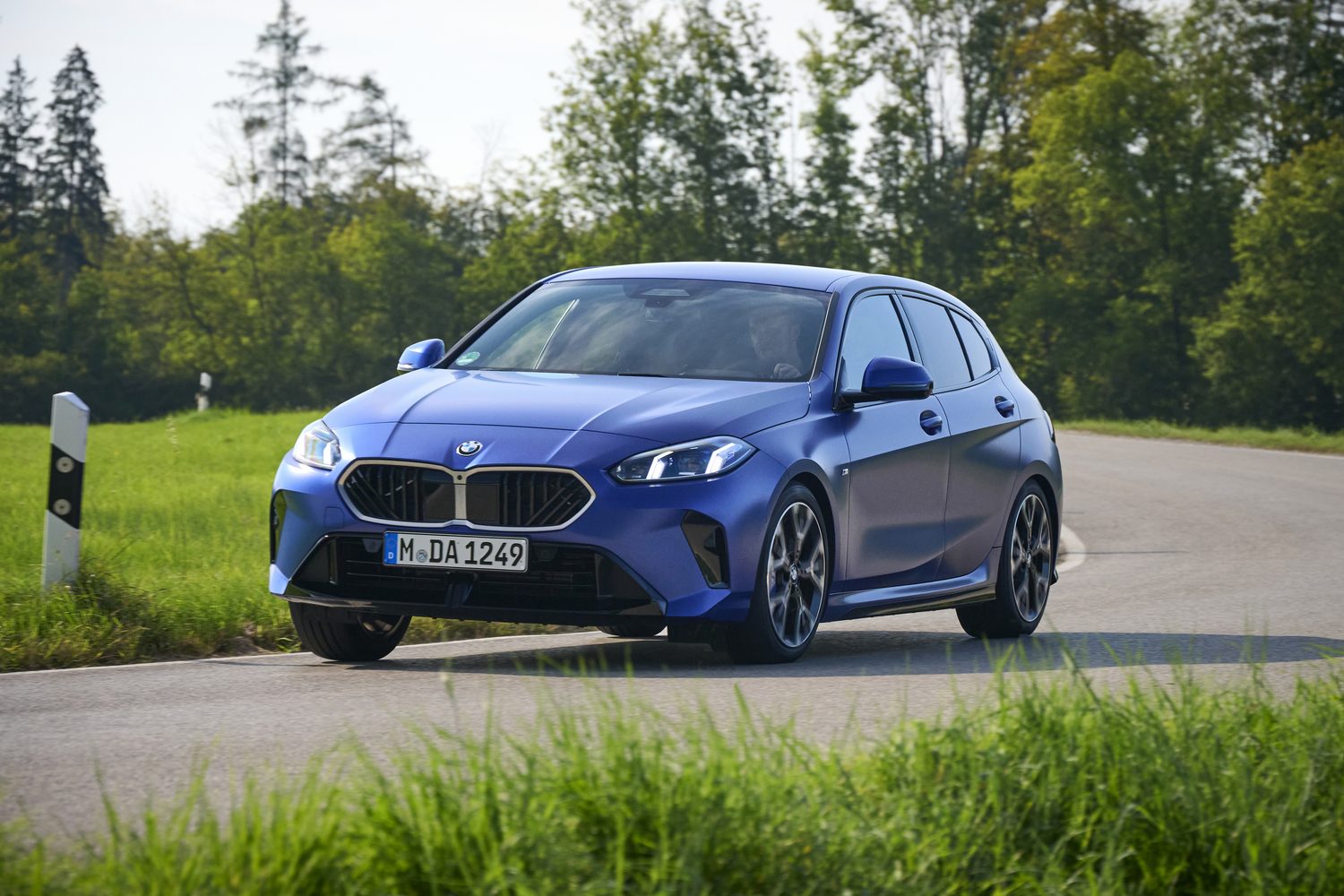
Once upon a time, the BMW 120 was seen as the gold standard for premium hatchbacks when it came to handling, and though the German engineers have made some compromises more recently, the latest-generation 1 Series is still one of the best in the business for keen drivers.
Sure, the 120 doesn’t have the sharpness and engagement of the M135, but it still has neat and tidy steering with predictable and linear responses, as well as well-weighted pedals. The brakes can feel a bit odd at times as the hybrid system juggles with the amount of brake energy regeneration in use, but the car feels stable and secure at all times, as well as agile.
It may not feel light on its feet, but it offers the reassurance and grip you need to chuck it into corners, and it’s one of the best hatchbacks in that sense. Certainly, it’s up there with the Mazda3 and Ford Focus.
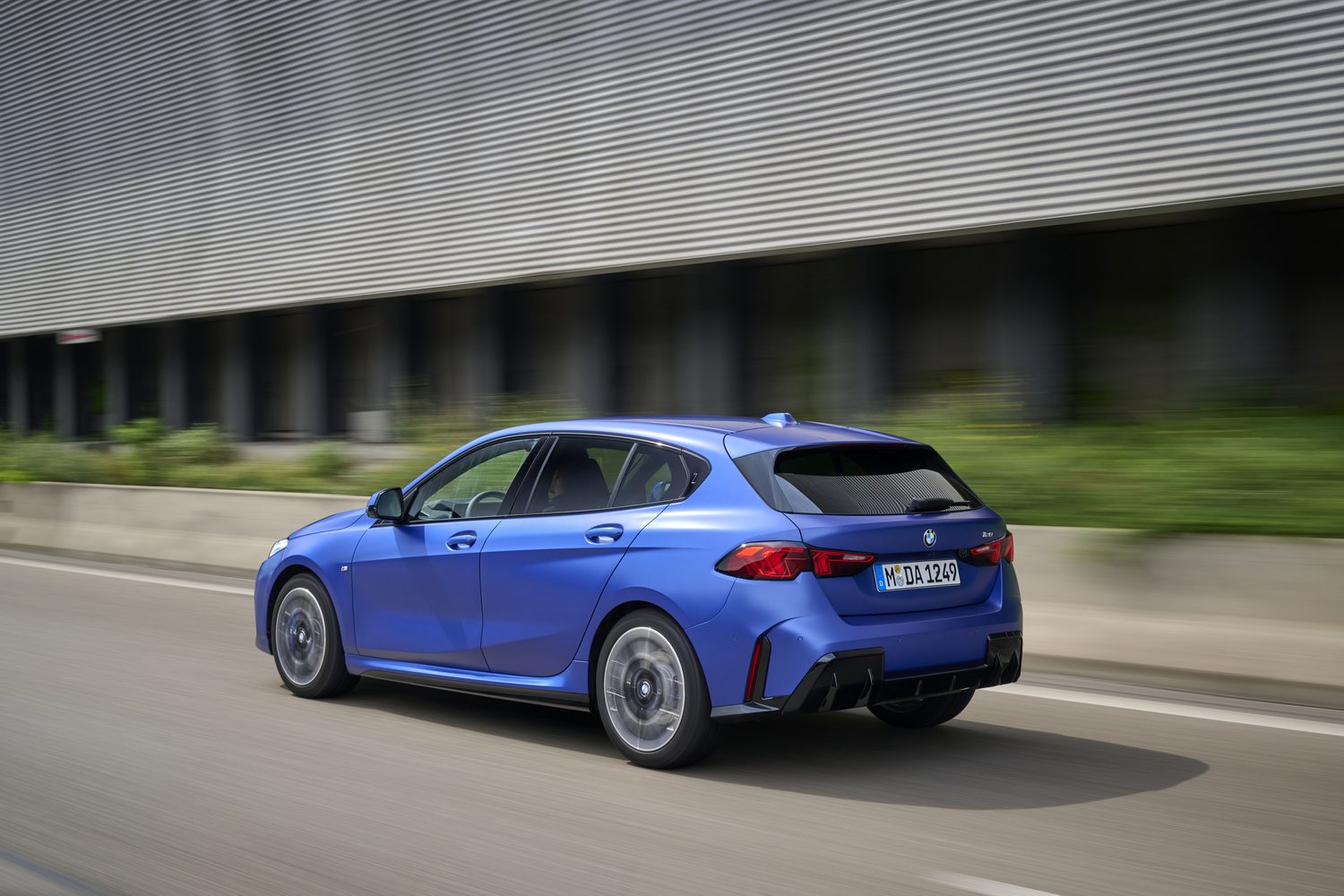
As a result, it doesn’t ride quite as well as some of the most comfortable family hatchbacks out there, but it’s far from the worst. Admittedly, our test took place on smooth Bavarian asphalt, but the few bumps the 1 Series did encounter were dealt with adeptly. You feel them through the seat, of course, but it rounds the edges off tidily and it never feels unsettled or out of its depth. And we suspect a basic Sport model, riding on smaller wheels, would be even more comfortable.
How safe is the BMW 120?
The new 1 Series still hasn’t been assessed by Euro NCAP, the independent European safety organisation, but if its predecessor’s score is anything to go by, it should be as safe as houses. Under the skin, the new model still shares plenty with the outgoing car, which achieved strong scores across the board, including a high rating for child occupant protection, which is good news for parents.
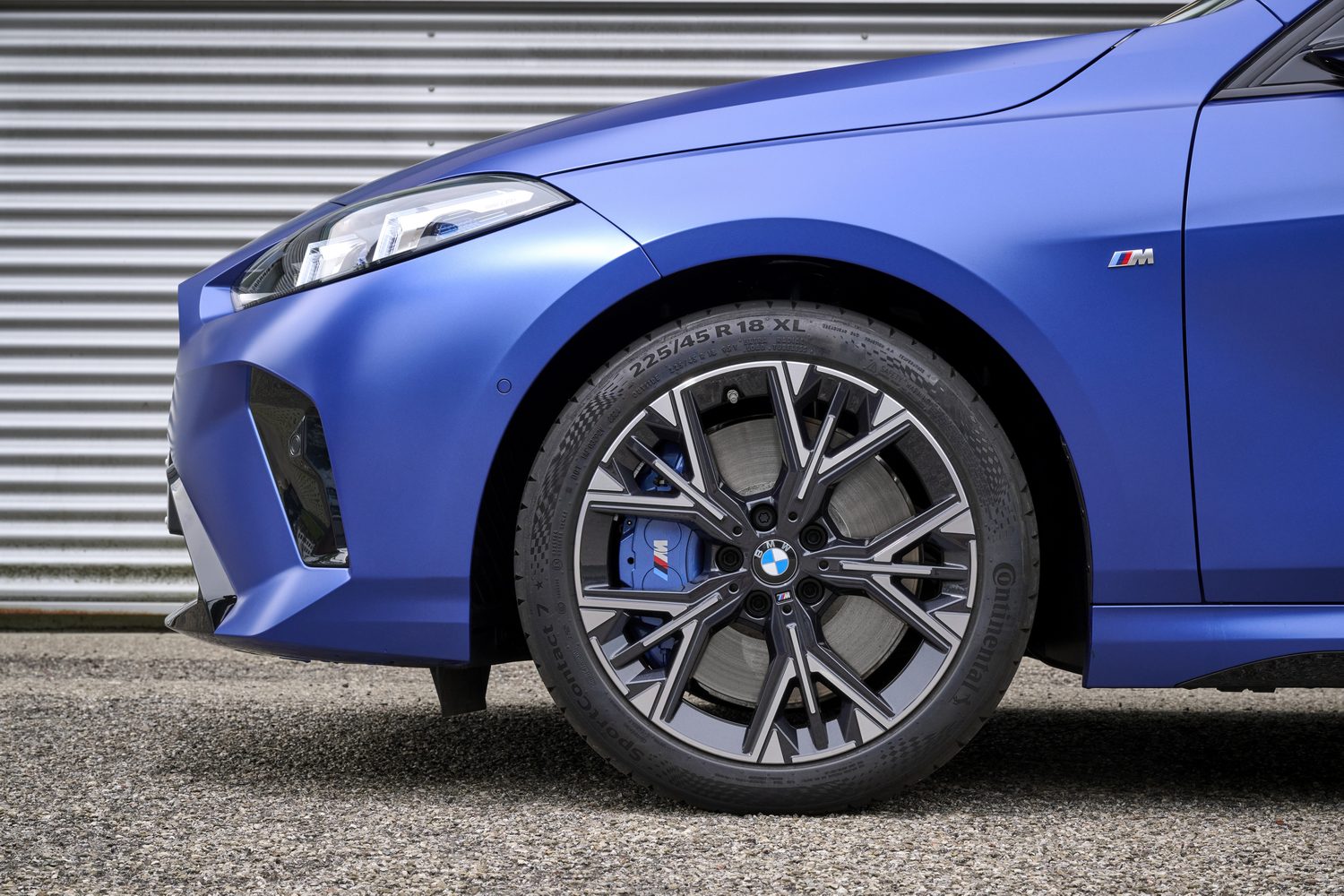
BMW also claims to have improved its driver assistance tech, and the lane-keeping assistance system’s performance certainly suggests that is the case. It’s now less obtrusive than before, feeling more natural and less like the car is trying to fight you. But the speed limit warning technology is still wildly inaccurate at times, and that can get annoying very quickly. At least you can turn it off fairly easily.
How many child seats can you fit in a BMW 120?
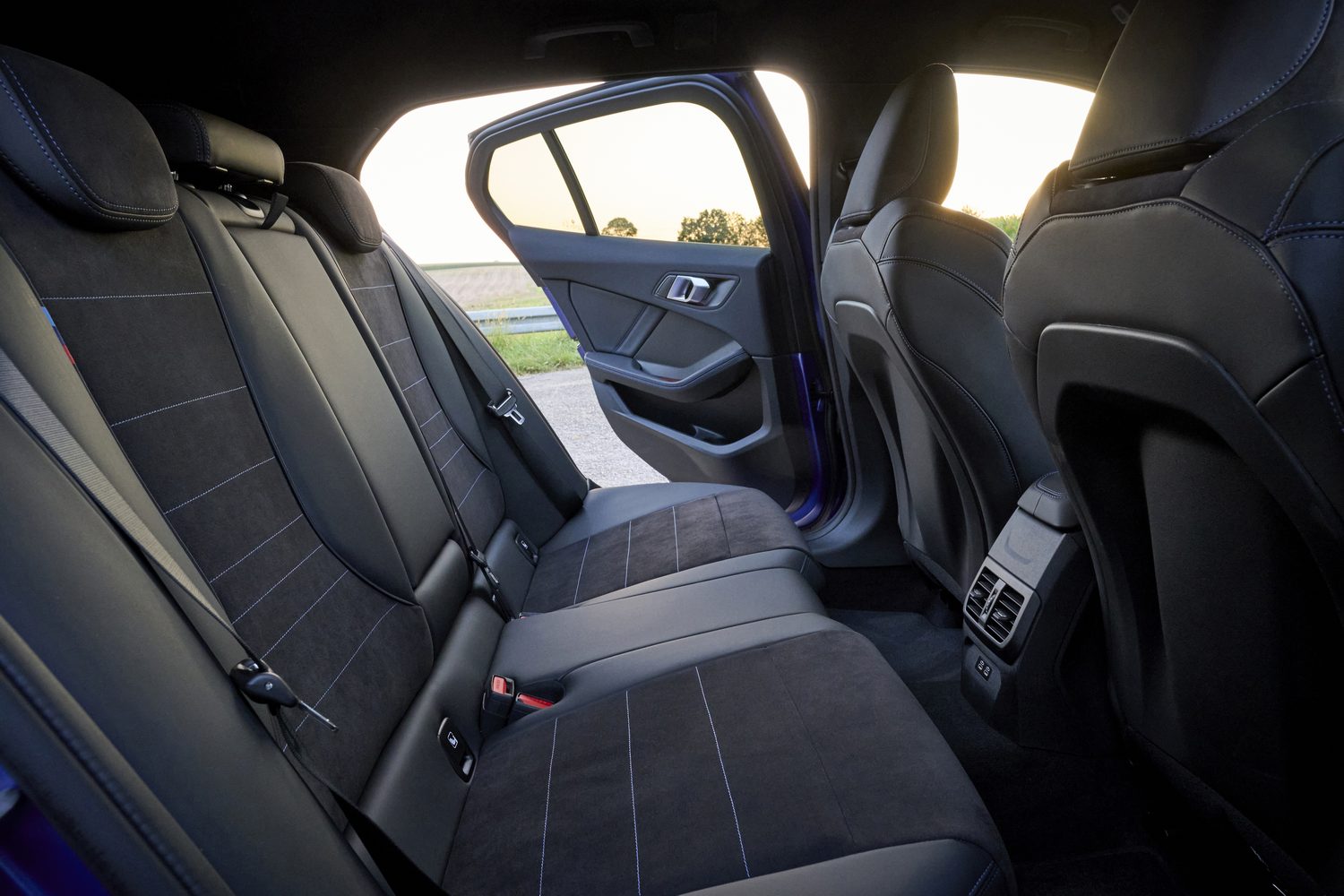
Even in M Sport form, as tested here with sporty seats, the 120 comes with three ISOFIX child seat mounting points, allowing you to fit one child seat in each of the two outermost rear seats, and another in the front passenger seat. While it’s only a major consideration for those with children of a certain age, it does help to put the 1 Series ahead of some rivals that don’t offer such flexibility. Parents of small kids may find the boot a little small though.
How much does the BMW 120 cost in Ireland?
Irish prices for the new 1 Series start at just under €42,000, which pays for the 120 in basic Sport trim. That makes the BMW slightly more expensive than the cheapest Audi A3, but the Audi has a much less powerful engine and a manual gearbox. Compare like-for-like powertrains and the two cars are within a few hundred euros of each other.
And the BMW’s list of included equipment is reasonably generous. The Curved Display is standard, along with automatic air conditioning, 17-inch alloy wheels and a reversing camera. Parking sensors, cruise control and LED headlights are also included. Move up to the M Sport version featured here, however, and you can add larger 18-inch alloy wheels, sports seats and a dark roof lining to the mix, as well as a sports steering wheel and ‘vegan’ microsuede upholstery.
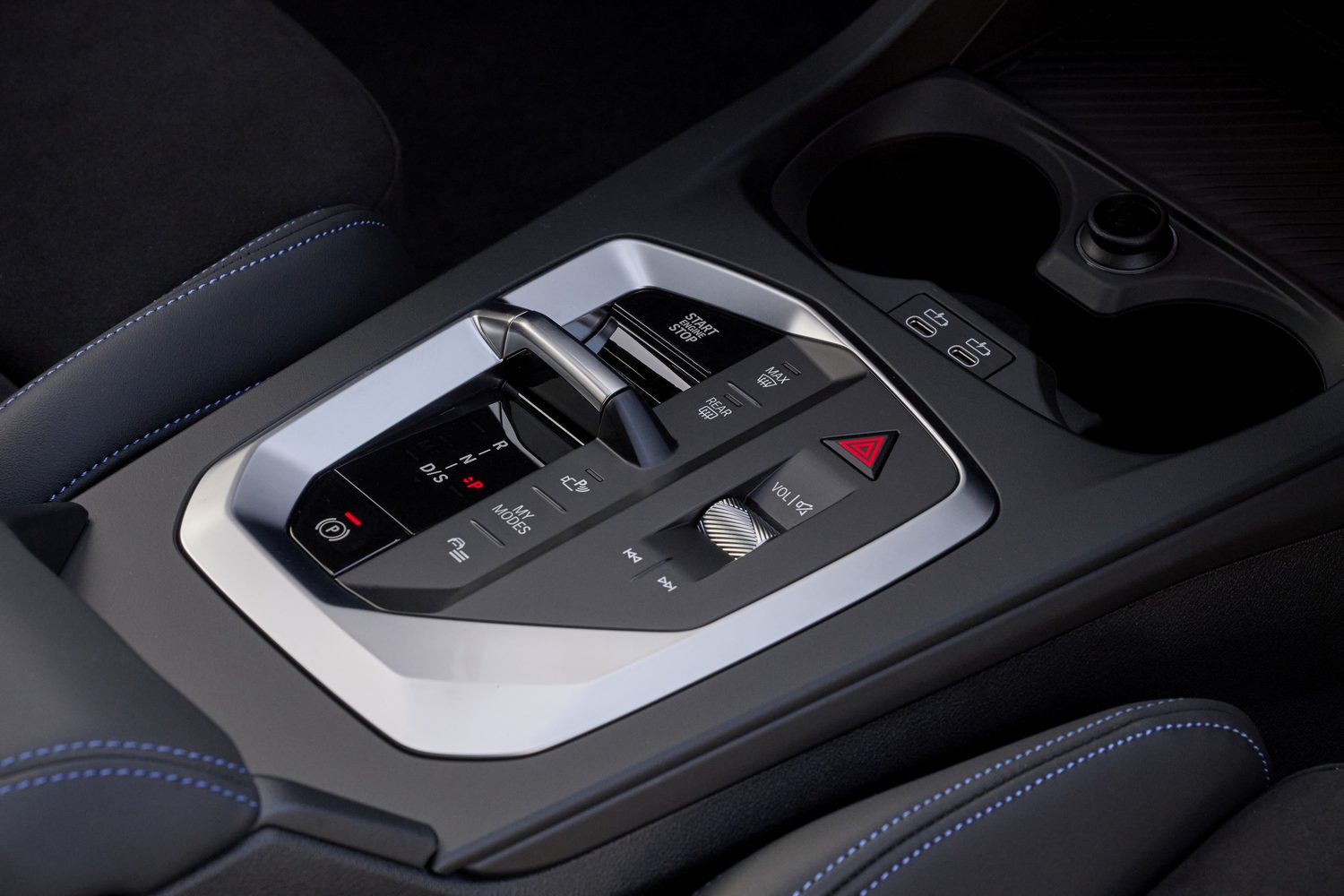
The reasons you’d buy a BMW 120
With an engaging driving experience and great engines, the 1 Series has continued where its predecessor left off, and it’s still one of the best premium hatchbacks you can buy. Yes, the boot is a bit small in this mild-hybrid form and some of the cabin plastics are a bit cheap, but they’re relatively minor concerns in what is a very accomplished hatchback. And with this engine under the bonnet, it offers a great combination of performance and efficiency.
Ask us anything about the BMW 120
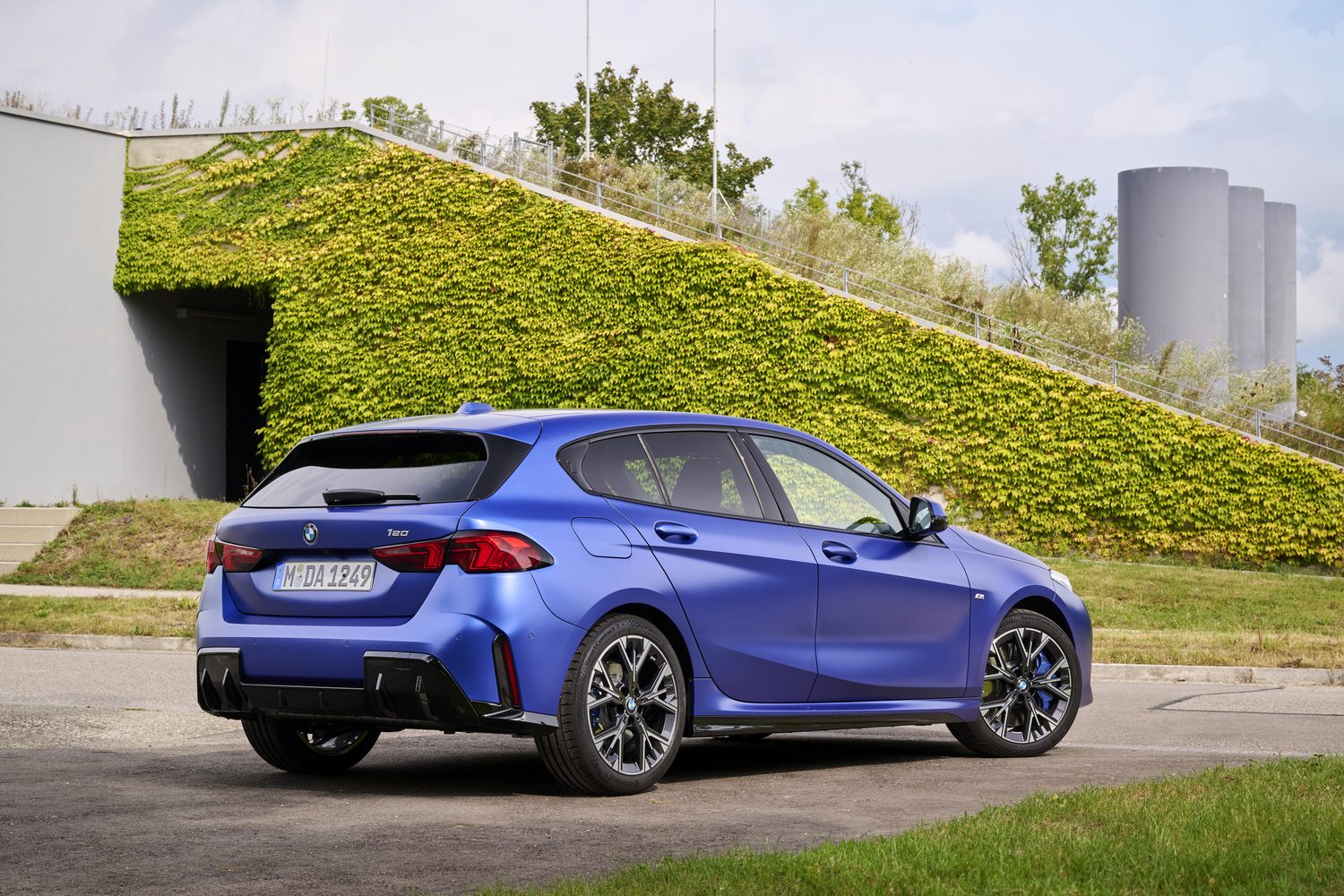
Should you want to know more about the new BMW 120, the 1 Series generally, or even any other car on sale in Ireland today, please avail yourself of the Ask Us Anything page. Here, you can post your questions and set our team of experts to work for you, giving you the information you need to buy your next car. And best of all, it’s completely free of charge.

